A Library and a Legacy:
celebrating 100 years of the Brotherton Collection
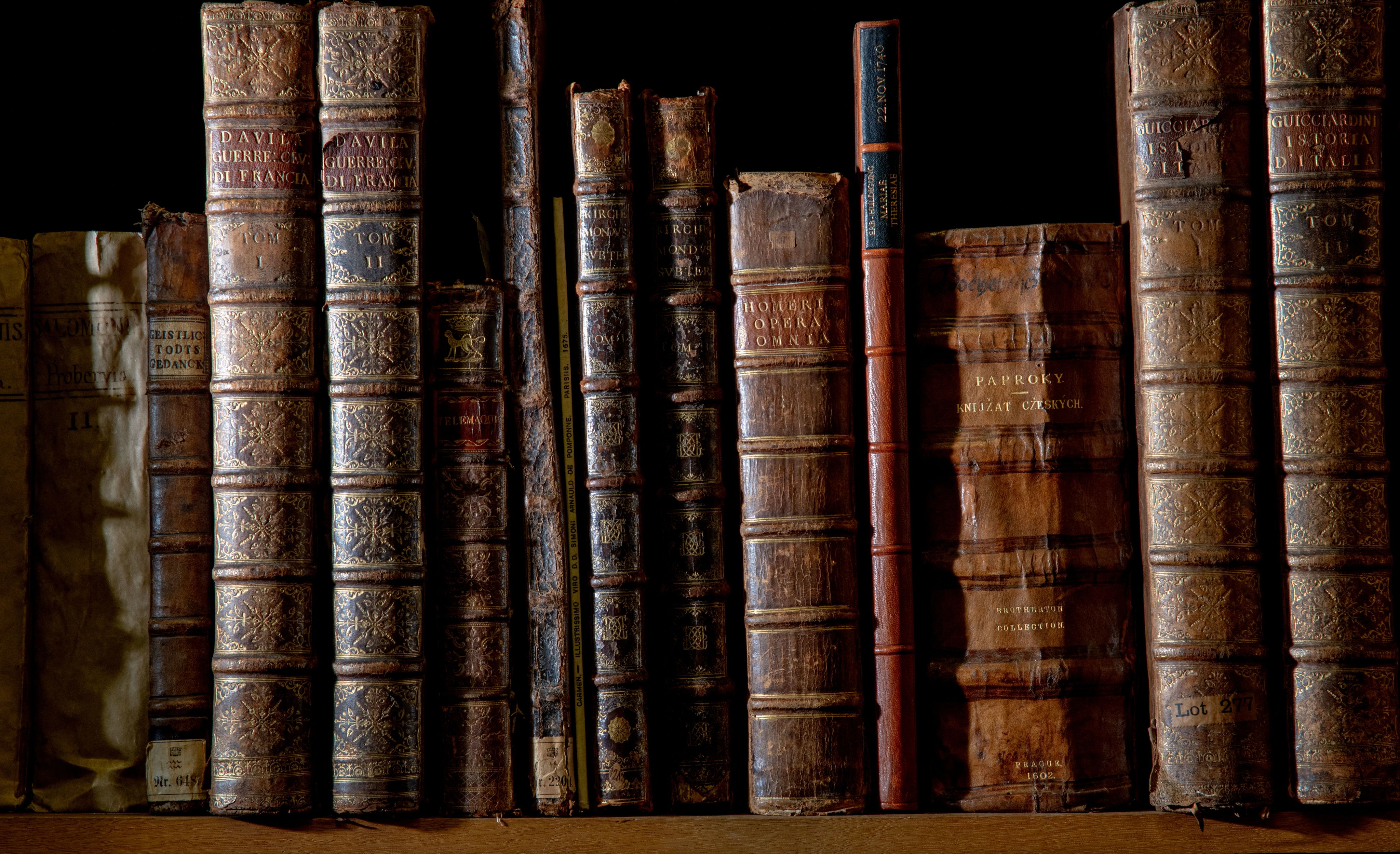
The Brotherton Collection is one of the most important and extensive collections of rare books and manuscripts established in England during the first half of the 20th century. The collection is 100 years old in February 2022.
This online exhibition celebrates this anniversary. It remembers Lord Brotherton, tells the story of how the collection started and highlights some of its extraordinary treasures.
The Brotherton Collection is now held in Special Collections at the Brotherton Library. Highlights from the collection will be on show in the Treasures of the Brotherton Gallery at the University of Leeds throughout 2022.
To find out more about in-person and online events to mark the centenary, search #Brotherton100 or join our mailing list.
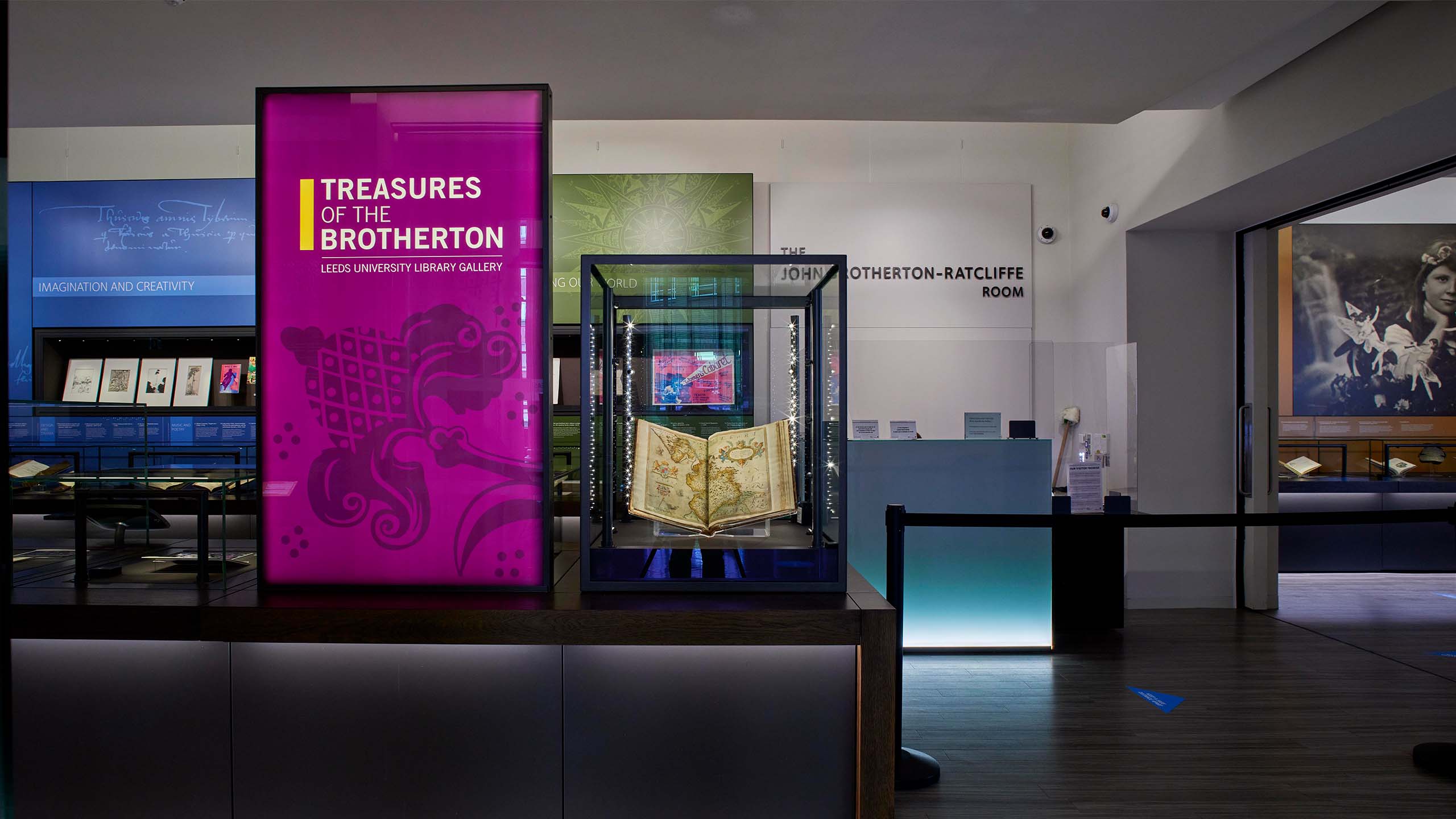
Lord Brotherton and the founding of the Collection
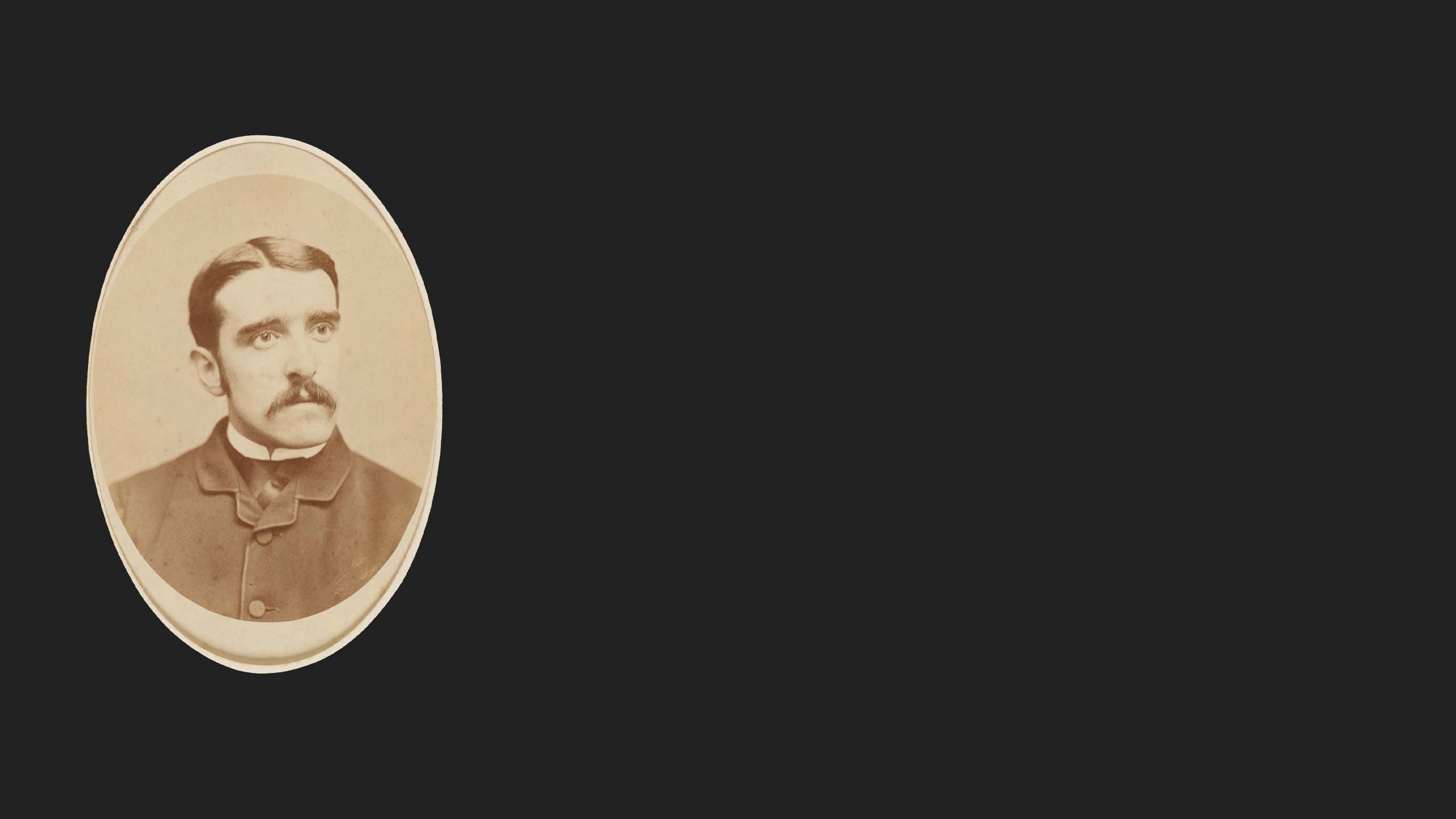
Out of disappointment ...
the Brotherton Library began with the loss of a great medieval manuscript
Lord Brotherton was the owner of one of the most successful chemical manufacturing businesses of his time and Dorothy Una Ratcliffe was the wife of his nephew and heir, Charles. Brotherton was a widower and Dorothy helped with his public duties. She acted as Lady Mayoress when he was Lord Mayor of Leeds.
Brotherton had a deep attachment to Wakefield. He started his business in the city and served as its mayor and its Member of Parliament. Dorothy was a poet and writer. When the rare 15th century Towneley manuscript of plays relating to the city came up for auction they decided to buy it for Wakefield.
Brotherton and Dorothy travelled to London. On 8 February 1922 they attended the auction at Sotheby’s, but they were outbid and left disappointed.
...the first book
To cheer Dorothy up, Brotherton offered to buy a book of her choice. She chose a first edition of “Miscellaneous Poems” (1681) by the Yorkshire poet, Andrew Marvell. This purchase was quickly followed by others as Lord Brotherton started to collect in earnest. Over the next eight years he gathered over 35,000 printed books and pamphlets, 30,000 letters and 400 other manuscripts.
Brotherton’s collection includes beautiful medieval manuscripts, some of the earliest books to be printed in Europe, rare editions of Shakespeare, and a wealth of literary correspondence including letters from Charlotte and Branwell Brontë.
After carefully creating such an impressive collection, why did Lord Brotherton give it away?
Lord Brotherton (1856–1930)
No man has better earned his captaincy of industry, or has associated with it a nobler sense of citizenship and public spirit. It is impossible to sum up here his benefactions, or to estimate the full extent of his goodwill towards every deserving cause.
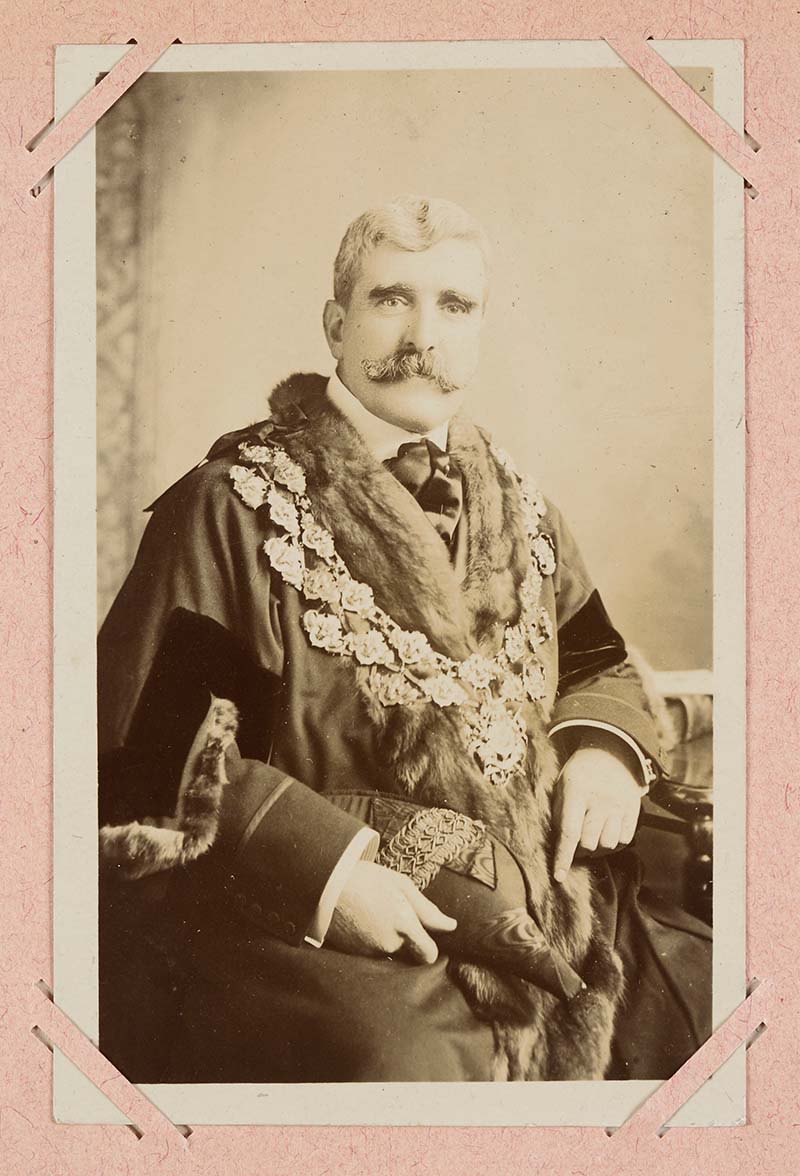
A picture from the family album of Lord Brotherton, dressed in his formal gowns and mayoral chain.
A picture from the family album of Lord Brotherton, dressed in his formal gowns and mayoral chain.
Building a business empire
Edward Allen Brotherton was born in Ardwick, Manchester in 1856, the eldest of Sarah and Theophilus Brotherton’s nine children. When he was just 22 his mother gave him £200 to start his own business and suggested that he advertised for partners. Very soon Dyson Bros. and Brotherton had their first premises in Wakefield.
Brotherton’s aim was to make chemical manufacturing processes as efficient and economic as possible. In just three years he earned enough to buy out the Dysons, and Brotherton & Co. was born.
A life of generosity
Brotherton shared his continued and phenomenal success with his family, his workers and the public.
To celebrate the coronation of Edward VII in 1902, and again in 1906 to celebrate his own 50th birthday, he opened bank accounts with the Yorkshire Penny Bank for every child registered at a public elementary school in Wakefield. Each account contained a shilling. He also founded the Brotherton Charity Trust for Wakefield’s men and women in need.
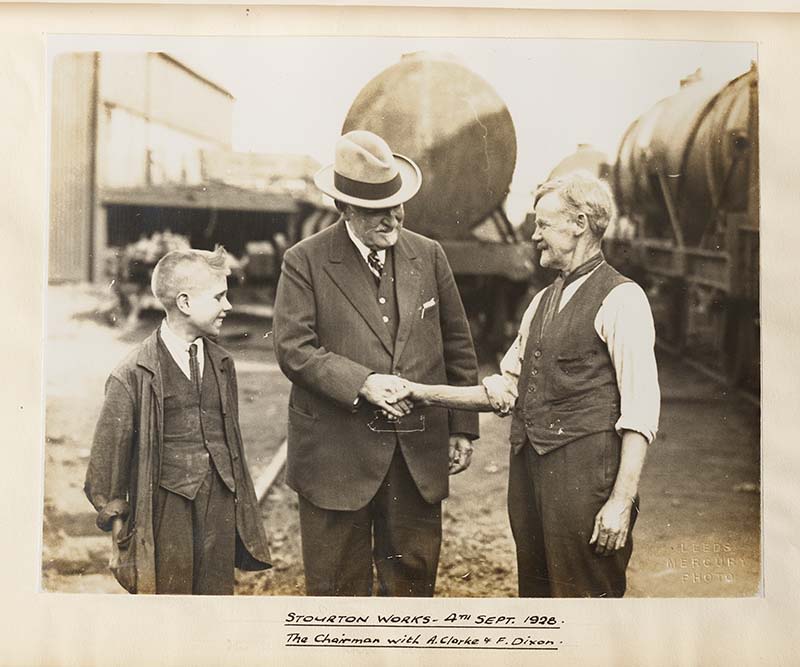
Lord Brotherton visiting the Stourton Works in 1928.
Lord Brotherton visiting the Stourton Works in 1928.
In September 1928, Brotherton celebrated 50 years of work with another generous act. He visited his nine factories and gave each employee a gold sovereign for every year that they had worked for him. Pensioners and the widows of men who had worked for the company were not forgotten. In Wakefield alone Brotherton gifted £976 and 10 shillings, equivalent to over £62,000 today.
A lasting legacy
a great library in a great University is a trust for the Nation at large
Brotherton was a keen supporter of the newly established University of Leeds. His significant donations included the endowment of a Chair in Bacteriology in 1922.
In 1927 he gave £100,000 for the building of the Brotherton Library. A further £100,000 was left to the University after his death in 1930, as was his unique collection of rare books and manuscripts.
The generosity of Lord Brotherton and the continued financial support of the Brotherton family means that the Brotherton Collection continues to grow and inspire new generations. Early career researchers are supported through the Brotherton Fellowship scheme and new poets are encouraged through the Brotherton Poetry Prize.
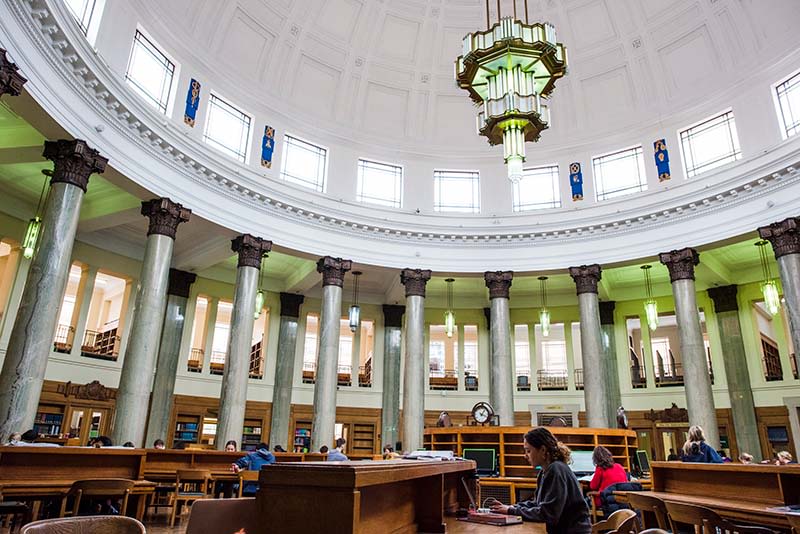
The art deco interior of the main building in the Brotherton Library, opened in 1936.
The art deco interior of the main building in the Brotherton Library, opened in 1936.
Shortly before his death Lord Brotherton laid the foundation stone for the Brotherton Library. He said that “a great library in a great University is a trust for the Nation at large.” A century after his first purchase, the Brotherton Collection remains accessible to everyone.
Here are just a few of the highlights.
Magnificent Medieval Manuscripts
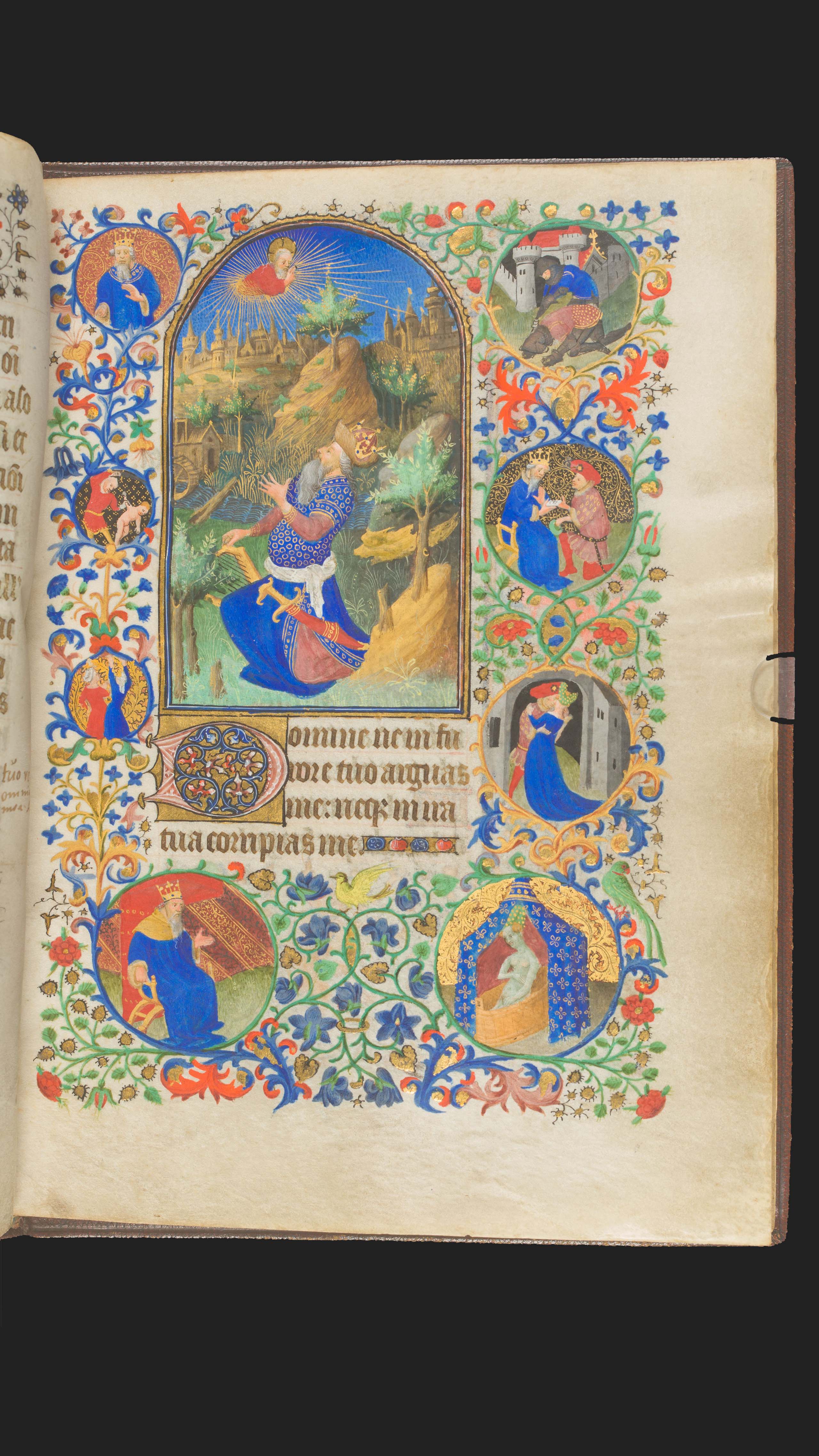
Lord Brotherton built his library with the same ambition and speed that he built his business. When the bookseller Chas J. Sawyer Ltd. sent him an advance listing of 12 medieval manuscripts, Lord Brotherton bought the whole lot in one bold move.
Manuscript means handwritten, and illuminations are the illustrations and decorations made on the pages, often in bright colours and gold.
The Brotherton Collection now contains over 40 examples of these beautiful early texts, including a chronicle of kings and biblical texts and prayer books.
The History Roll
One extraordinary illuminated manuscript is nearly 18 metres long and is made from 39 large pieces of parchment, or sheep skin, pasted together. The manuscript is kept rolled up, and wooden rollers at each end allow it to be read section by section.
The manuscript was produced in Paris during the reign of King Louis XI of France (1461–1483). It is written in Anglo-Norman French and traces the genealogy of the Kings of France right back to the biblical story of Adam and Eve.
The text is illustrated by 64 exquisite roundels or decorative discs.
The first row of roundels shows the six days of Creation as told in the Bible. The chronicle depicts stories of the Old Testament then moves on to the life of Christ, Greek and Roman history, and finally Western European history.
Popes, Emperors and French and British Kings are all featured in the roll. The roll also contains a mystery. The roundel that shows the coronation of William the Conqueror has been cut out of the manuscript – only a jagged hole remains! No-one knows who vandalised the text, when it happened, or why.
Intricate illuminations and fantastic beasts
Other beautiful examples of medieval illumination are found in the books of hours, psalters and prayer books held in the Brotherton Collection.
Books of hours were Christian devotional books that often contained biblical texts, psalms and prayers.
The illustrations in these books are intriguing. Scenes from the Bible are often set next to intricate borders which might include pictures of musicians, animals, agricultural labourers and fantastic beasts.
Early printing and beautiful books
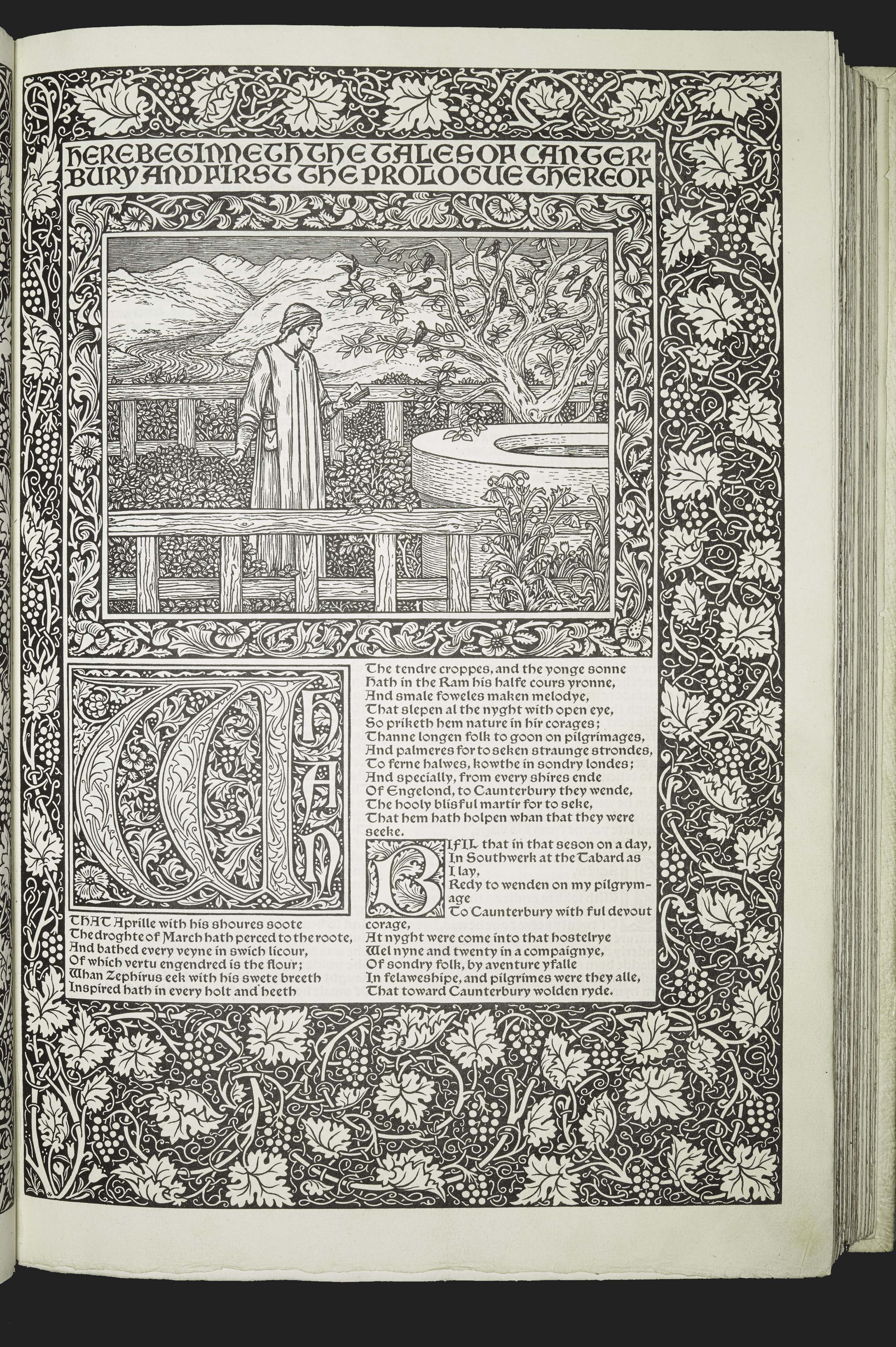
The Brotherton Collection includes nearly 300 volumes of incunabula – the name given to books printed in Europe before 1501.
Two fascinating examples are the works of the Roman poet Ovid (1477) and the "Schatzbehalter" (1491). Illustrations are important to both of these works, but some were added after publication! Medieval books were also an inspiration for one of the most beautiful books produced in the 19th century.
Ovid and Oswald the doodler
The three volumes of the Brotherton Ovid were printed in Parma, Italy in 1477. They are full of notes and doodles that appear alongside the printed text. Many of these scribbles were made by a young German nobleman called Oswald von Eck and can be dated to 1540–1541 when he was a student In Ingolstadt, Bavaria. They include colour illustrations of animals, mythical creatures and scenes from Ovid.
Oswald squandered his inheritance and towards the end of his life all his possessions, including his books, were sold. Other copies of this edition of Ovid’s work do survive but it is extremely rare to find the three volumes still together, and in such superb condition, after nearly 550 years.
Many books in the collection include the marks of previous owners like bookplates or signatures, but it is unusual to see this many doodles. They give us a wonderful insight into the history of books, who they have been read by and how they have been used.
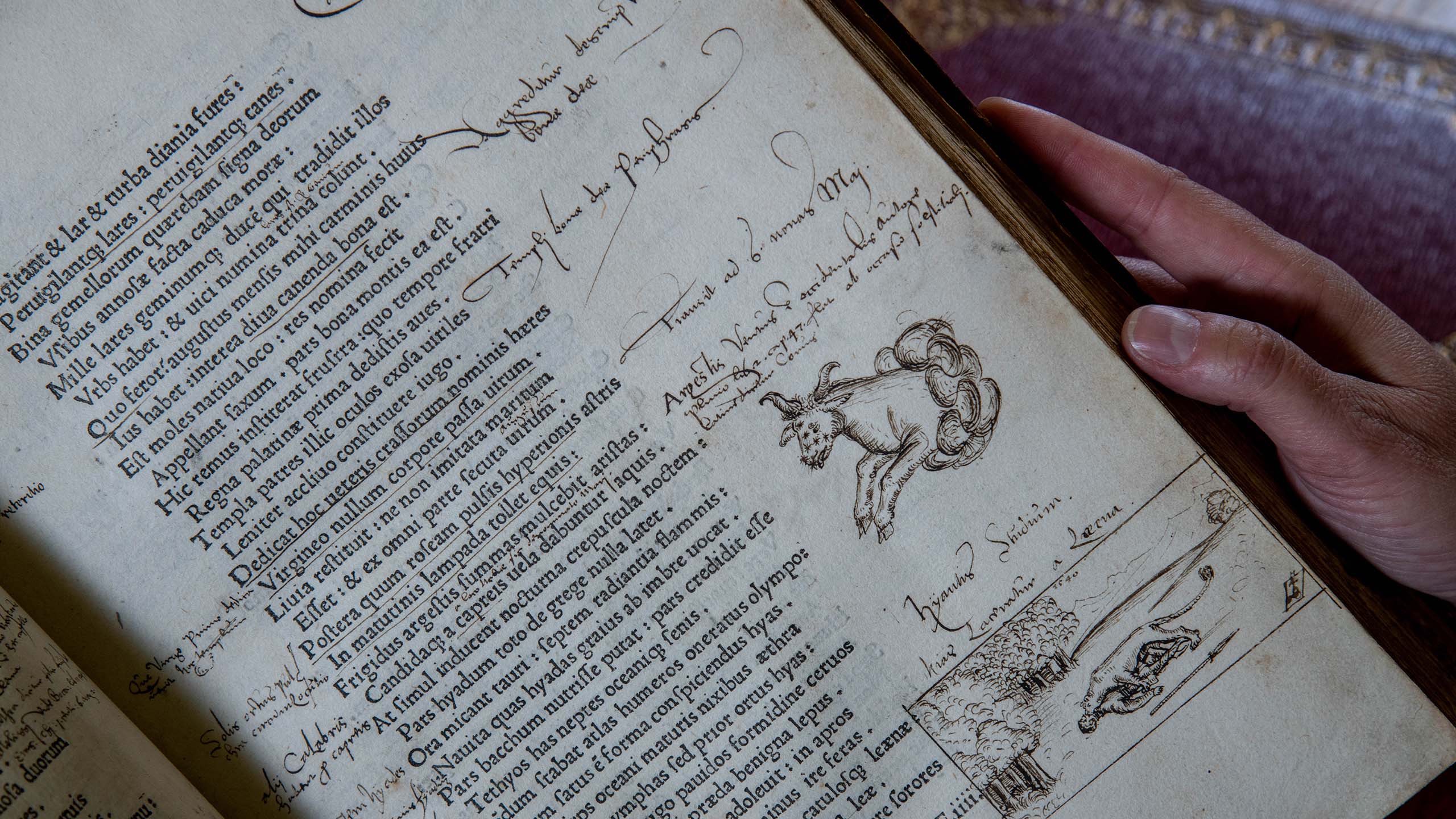
Oswald von Eck's doodles in the margins of a volume of Ovid, now a part of the Brotherton Collection
Oswald von Eck's doodles in the margins of a volume of Ovid, now a part of the Brotherton Collection
Wolgemut woodcuts bring text to life
Lord Brotherton made sure he acquired the most important examples of early illustrated printed books. One example of this is the “Liber Chronicarum” or “Nuremberg Chronicle”, which was the first printed book to successfully combine text and imagery.
Michael Wolgemut was the celebrated artist and printmaker who designed the woodcuts for the “Nuremberg Chronicle”. He also illustrated another item in Brotherton’s collection: the “Schatzbehalter wahren Reichtümer des Heils und ewiger Seligkeit”, or “Treasury of the true riches of Salvation and eternal bliss” by Stefan Fridolin.
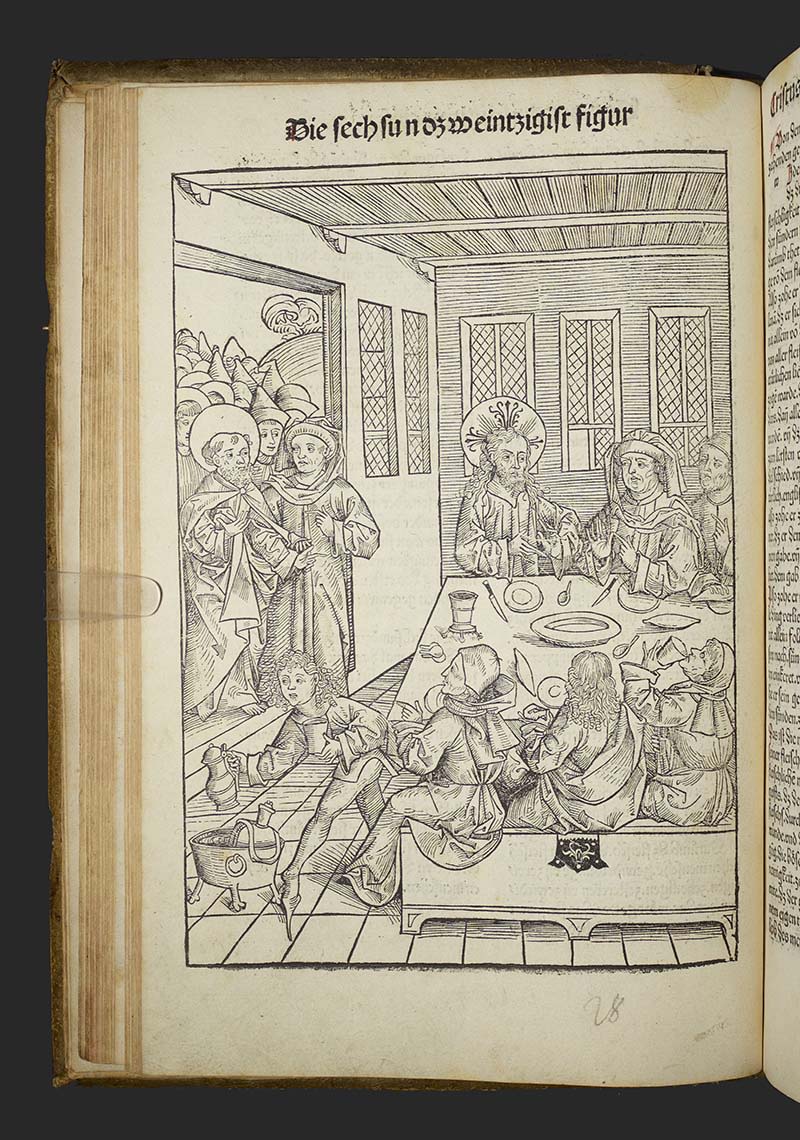
A woodcut image designed by Wolgemut in the Brotherton Collection's copy of "Schatzbehalter"
A woodcut image designed by Wolgemut in the Brotherton Collection's copy of "Schatzbehalter"
The “Schatzbehalter” narrates 100 events in the life of Christ and is illustrated with 96 woodcuts. The vivid illustrations were designed to help everyone remember the Christian story, even those who could not read.
The binding of the Brotherton Collection “Schatzbehalter” is also original. The white, blind-tooled pigskin and decorated metal clasps are typical of the German style of bookbinding in the late 15th century.
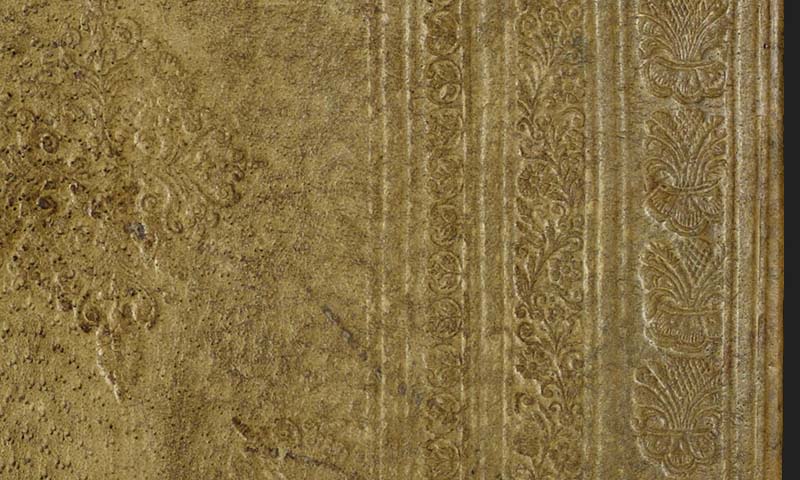
Close-up details of the decoration on the pigskin binding of the “Schatzbehalter” showing patterns of sheafs of wheat, plants and flowers.
Close-up details of the decoration on the pigskin binding of the “Schatzbehalter” showing patterns of sheafs of wheat, plants and flowers.
William Morris and the Kelmscott Chaucer
The designer, author and socialist William Morris (1834–1896) was fascinated by early printing and owned incunabula now in the Brotherton Collection, which contain bookplates from his Kelmscott House.
Morris was inspired by medieval book design and craftsmanship. Lord Brotherton’s copy of “The works of Geoffrey Chaucer”, produced by Morris’s Kelmscott Press, is bound in the same style as the “Schatzbehalter”.
This magnificent Kelmscott Chaucer was co-designed with Edward Burne-Jones and was the last great project of William Morris’s life. It took four years to produce and was an ambitious undertaking with large numbers of illustrations, rich decorative borders and ornamental initials.
“If we live to finish it,” Burne-Jones wrote, “it will be like a pocket cathedral – so full of design and I think Morris the greatest master of ornament in the world.” The book was completed in June 1896 and William Morris died in October the same year.
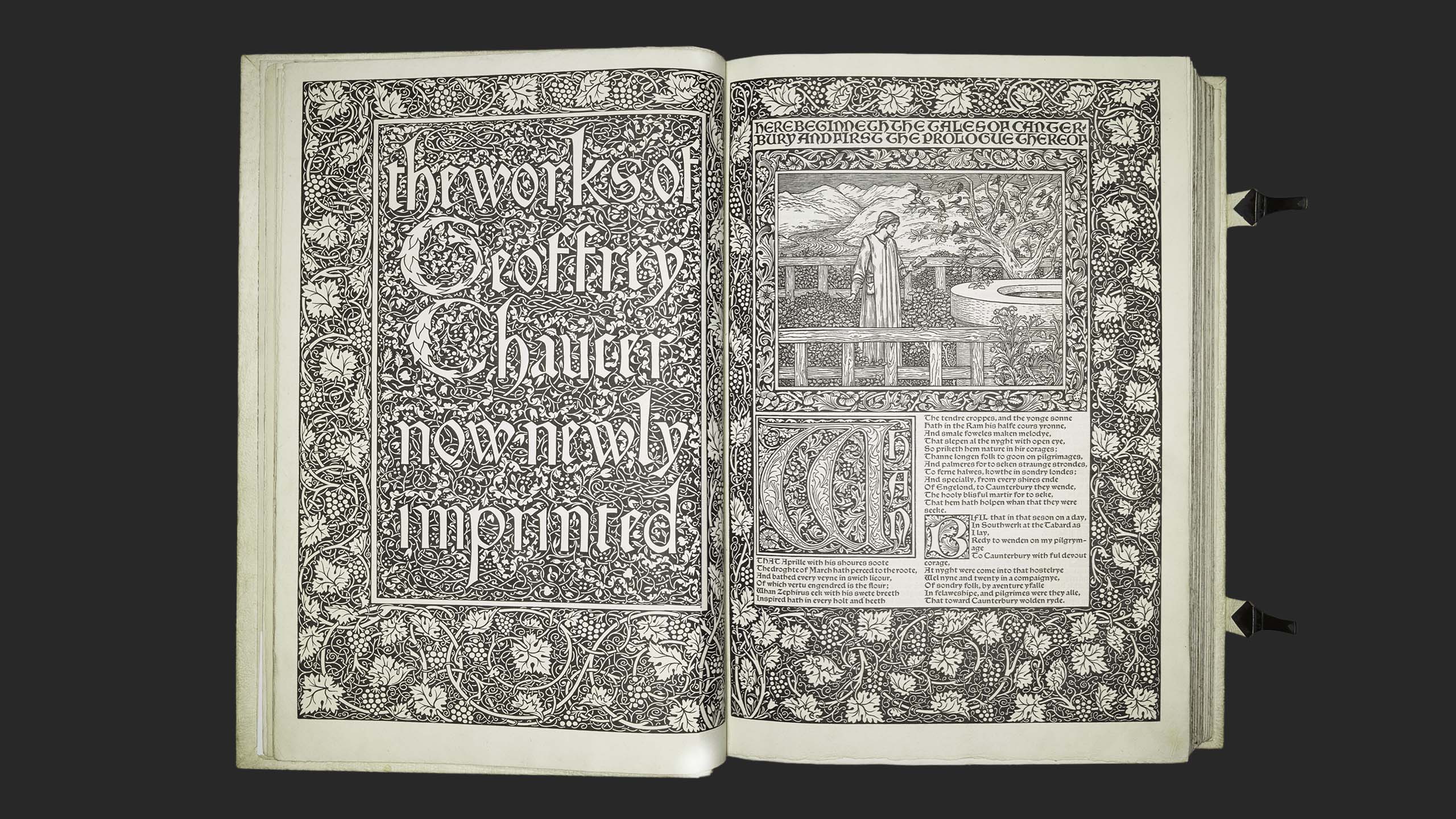
The front pages of the Kelmscott Chaucer, designed by William Morris and Edward Burne-Jones and printed in 1896.
The front pages of the Kelmscott Chaucer, designed by William Morris and Edward Burne-Jones and printed in 1896.
Shakespeare and his peers
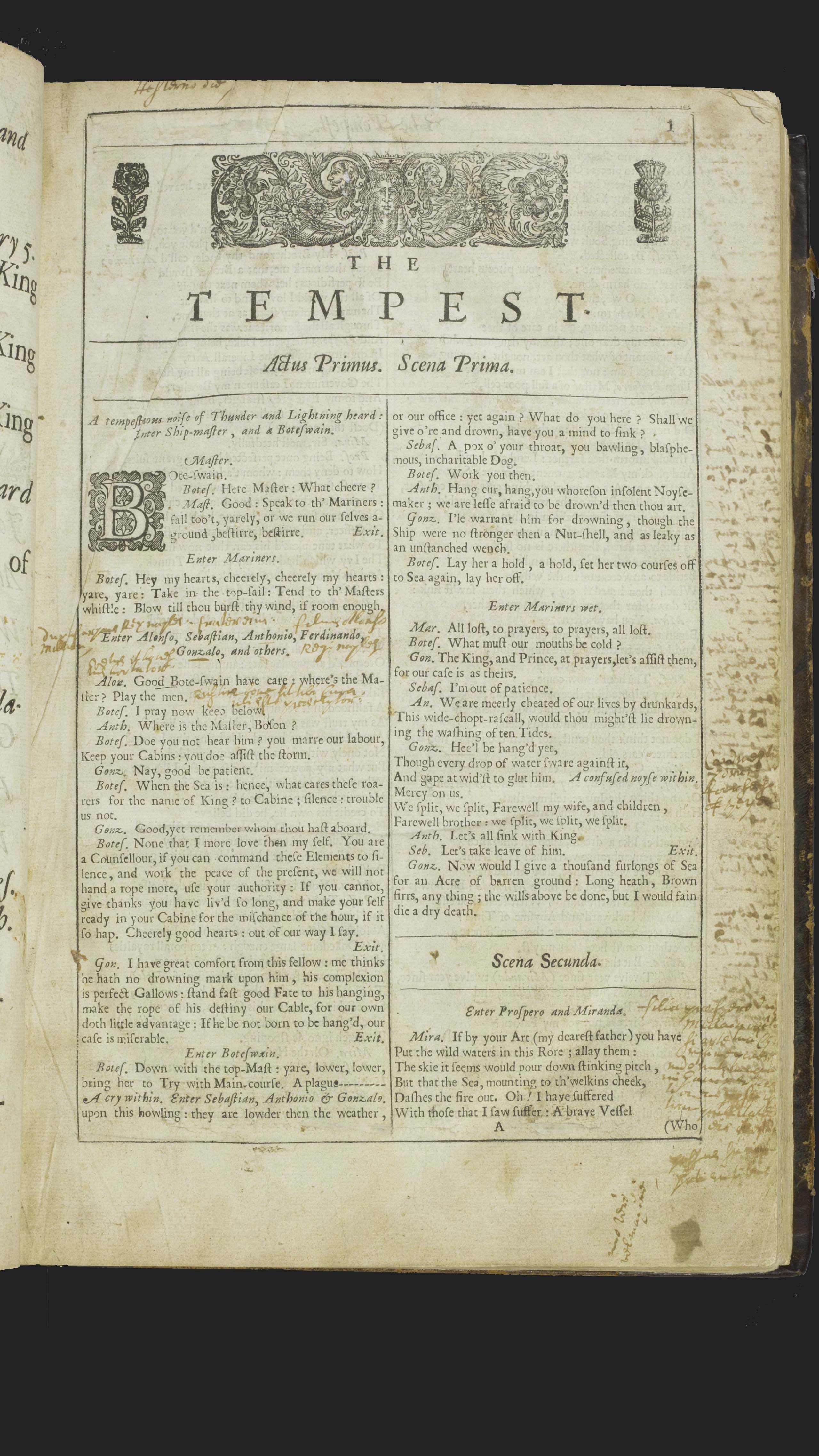
The Brotherton Collection is exceptionally rich in 17th century drama. This includes all four of the Shakespeare folios. These are the first collected editions of Shakespeare’s plays and are considered the “holy grail of book-collecting”.
In his first few years of collecting Lord Brotherton also acquired the Jonson folio (1616) and in 2020 a very special copy of Beaumont and Fletcher’s “Comedies and Tragedies” (1647) was acquired for the collection. Together, these books form a set of the most significant dramatic works of the 17th century, rarely held together.
Four folios, and the folio before
The first Shakespeare folio was published in 1623, seven years after Shakespeare’s death. It was compiled by his theatrical colleagues John Heminge and Henry Condell. Only 18 of Shakespeare’s plays had previously been printed in small, cheap books known as quartos. Heminge and Condell added another 18 plays based on “true original copies”.
Without this book, plays including “Twelfth Night”, “Measure for Measure”, “Macbeth”, “Julius Caesar”, and “The Tempest” might have been lost. Of the 750 to 1,000 copies that were probably printed only around 235 survive and not all of these are complete. No two copies are identical because corrections were made as printing progressed, but incorrect pages were not discarded.
The next three Shakespeare folio editions were published in 1632, 1664 and 1685. The Third Folio is especially rare as many copies are thought to have been destroyed in the Great Fire of London in 1666.
The first few pages of “The Tempest” in the Brotherton Collection Third Folio contain detailed marginal notes. These markings and underlinings were perhaps made for a performance of the play.
The folio editions of Shakespeare’s works might not exist if it were not for Ben Jonson. Jonson had a folio of his own works published in 1616. Folios were large and expensive books usually reserved for religious, historical or poetic texts. Jonson was the first playwright to use the folio format to assert the importance of drama.
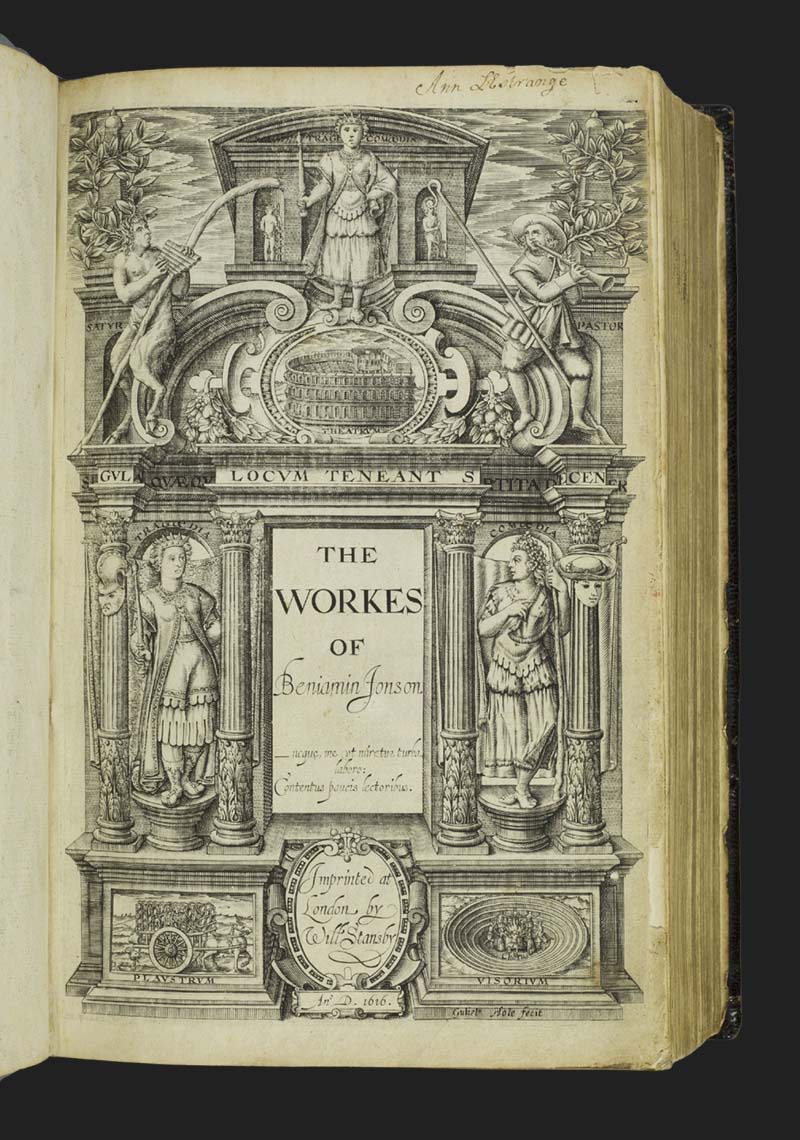
"The Workes of Beniamin Jonson" - the folio before the First Folio, printed in 1616.
"The Workes of Beniamin Jonson" - the folio before the First Folio, printed in 1616.
A royal association
Francis Beaumont and John Fletcher’s “Comedies and Tragedies” was published in 1647. John Fletcher followed Shakespeare as playwright for the King’s Men acting company.
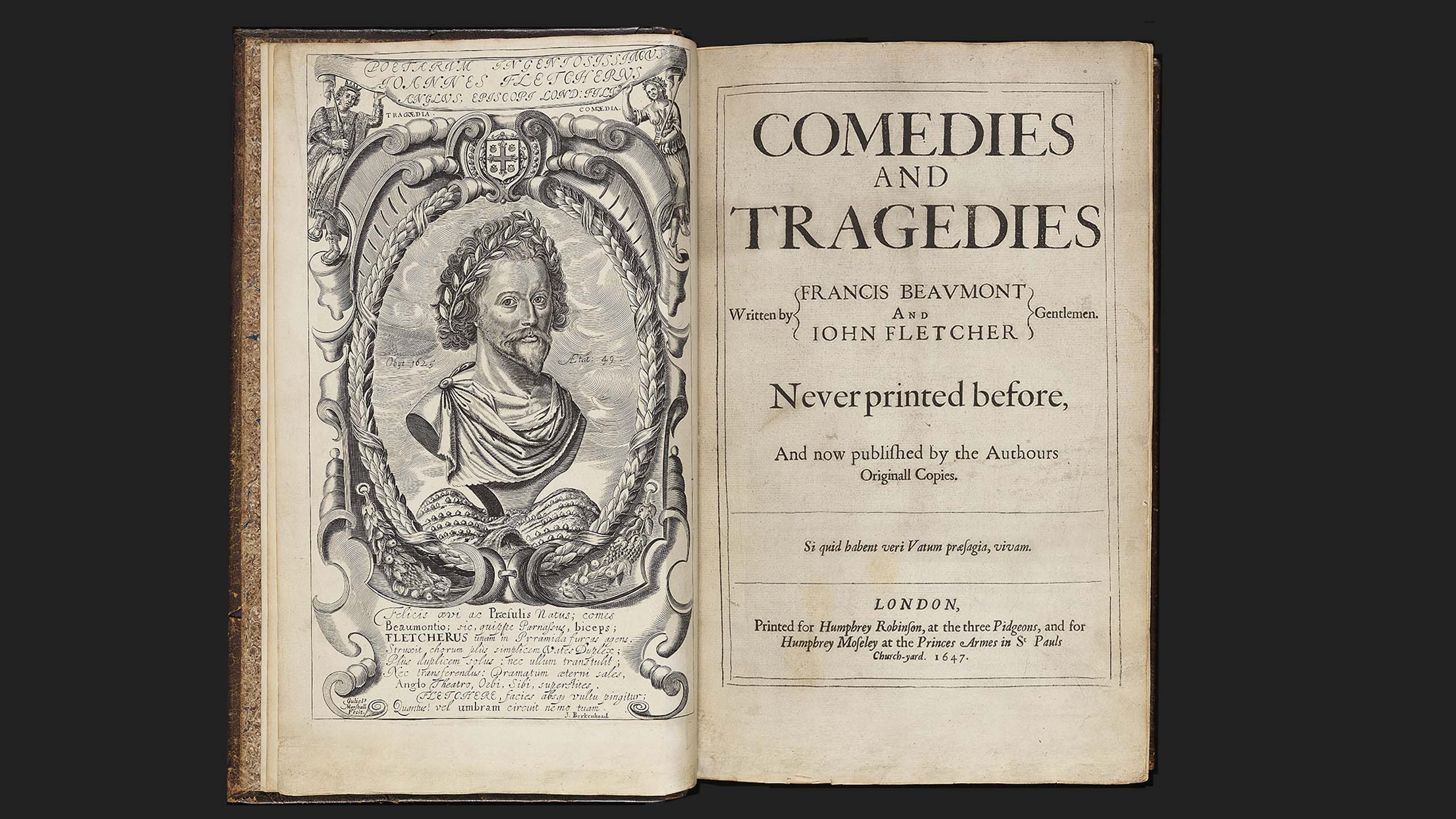
Beaumont and Fletcher's Comedies and Tragedies, printed in 1647.
Beaumont and Fletcher's Comedies and Tragedies, printed in 1647.
This folio was published in the middle of the English Civil War, when all public theatres had been closed by the Parliamentary authorities. It allowed the public to read the plays they could no longer see on stage. The publisher was the staunch Royalist Humphrey Moseley. The book was printed by at least eight printers, including two women, Susan Islip and Ruth Raworth.
The Brotherton Collection copy of Beaumont and Fletcher’s “Comedies and Tragedies” once belonged to King Charles II. It was part of his library in 1649 when he was still Prince of Wales. Its binding bears his royal armorial stamp of feathers emerging from a coronet and his motto “Ich dien” (I serve). Its purchase in 2020 was made possible through the generosity of the Brotherton family.
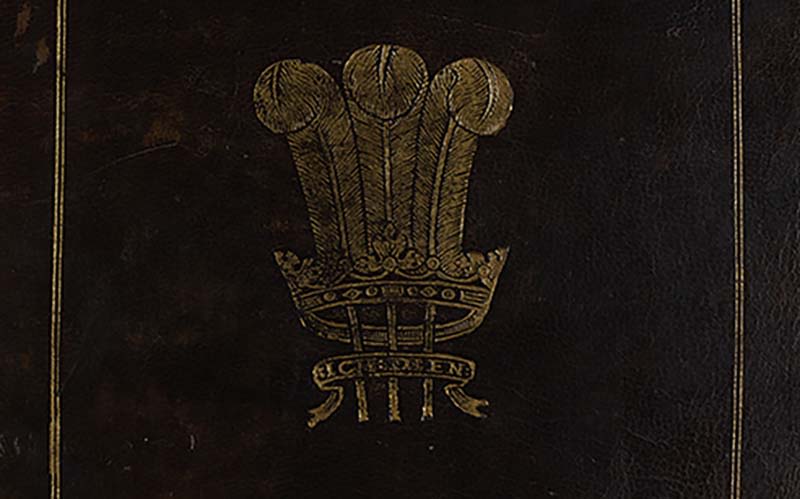
Three golden feathers emerge from a crown with King Charles the second’s motto “Ich dien” (I serve) below, found on the binding of the Brotherton Collection’s copy of Beaumont and Fletcher’s “Comedies and Tragedies”.
Three golden feathers emerge from a crown with King Charles the second’s motto “Ich dien” (I serve) below, found on the binding of the Brotherton Collection’s copy of Beaumont and Fletcher’s “Comedies and Tragedies”.
Travels and travelling
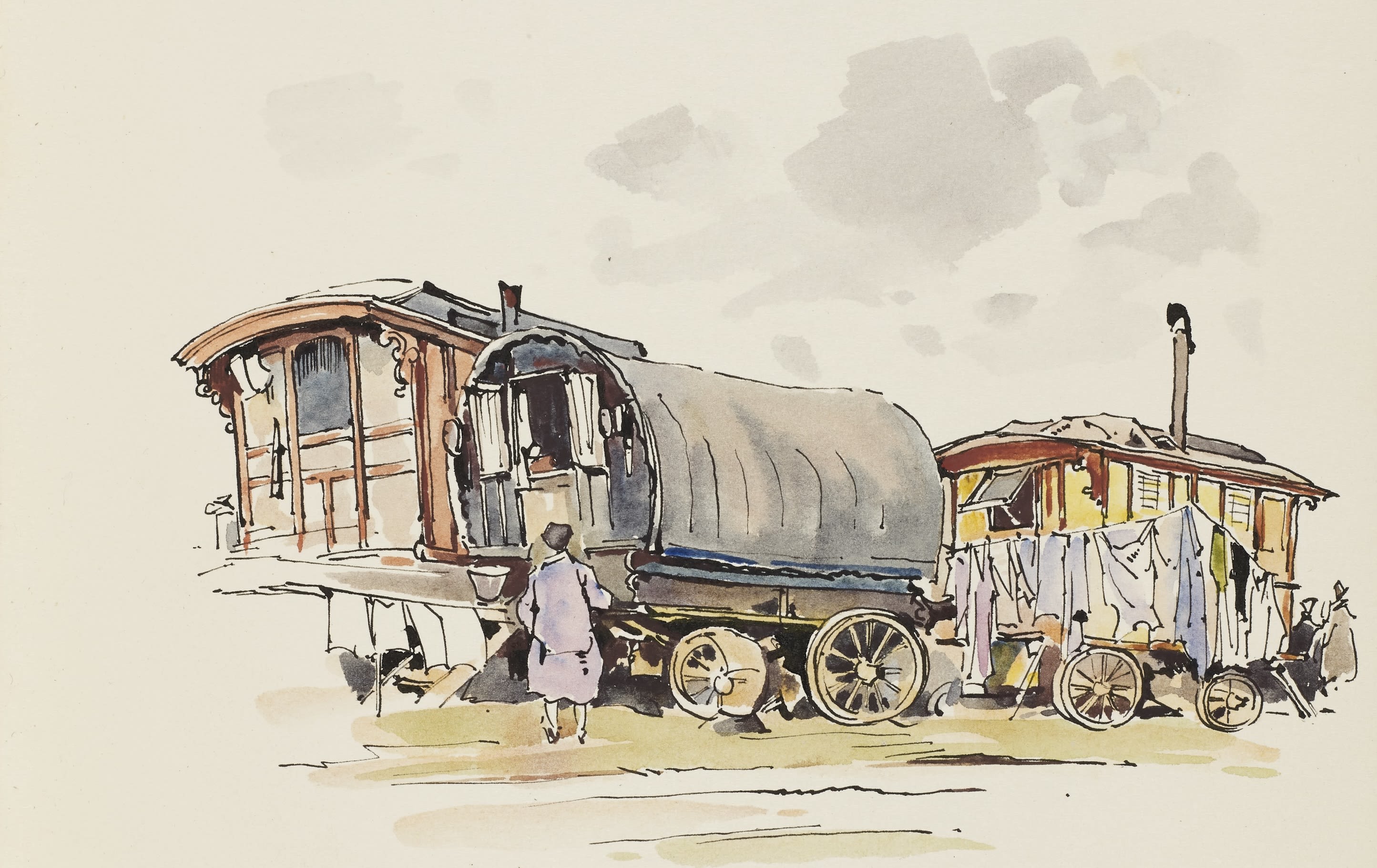
The Brotherton Collection is rich in travel-related material, including first-hand accounts written in the 17th and 18th centuries.
These early travel writers include an aspiring medical student, an Earl’s son escaping religious persecution and an anonymous naval victualler (provider of food and drink), whose diary includes precise illustrations, anecdotes and advice about overseas ports.
Essential items
What are the first things you pack when you travel? A passport? Some holiday reading? A phrasebook?
Essential item 1: passport(s)
The Russian and Polish passports used by the spy, celebrity and expert fencer, the Chevalier d’Eon (1728–1810), are some of the more practical travel items in the Brotherton Collection.
D’Eon worked as a spy for King Louis XV of France and was part of his underground network the “Secret du Roi” from 1756.
D’Eon lived their first thirty years as a man and the remainder of their life as a woman, living in London and continuing to earn money by fencing. They have been acknowledged as one of the first openly transgender figures in European history.
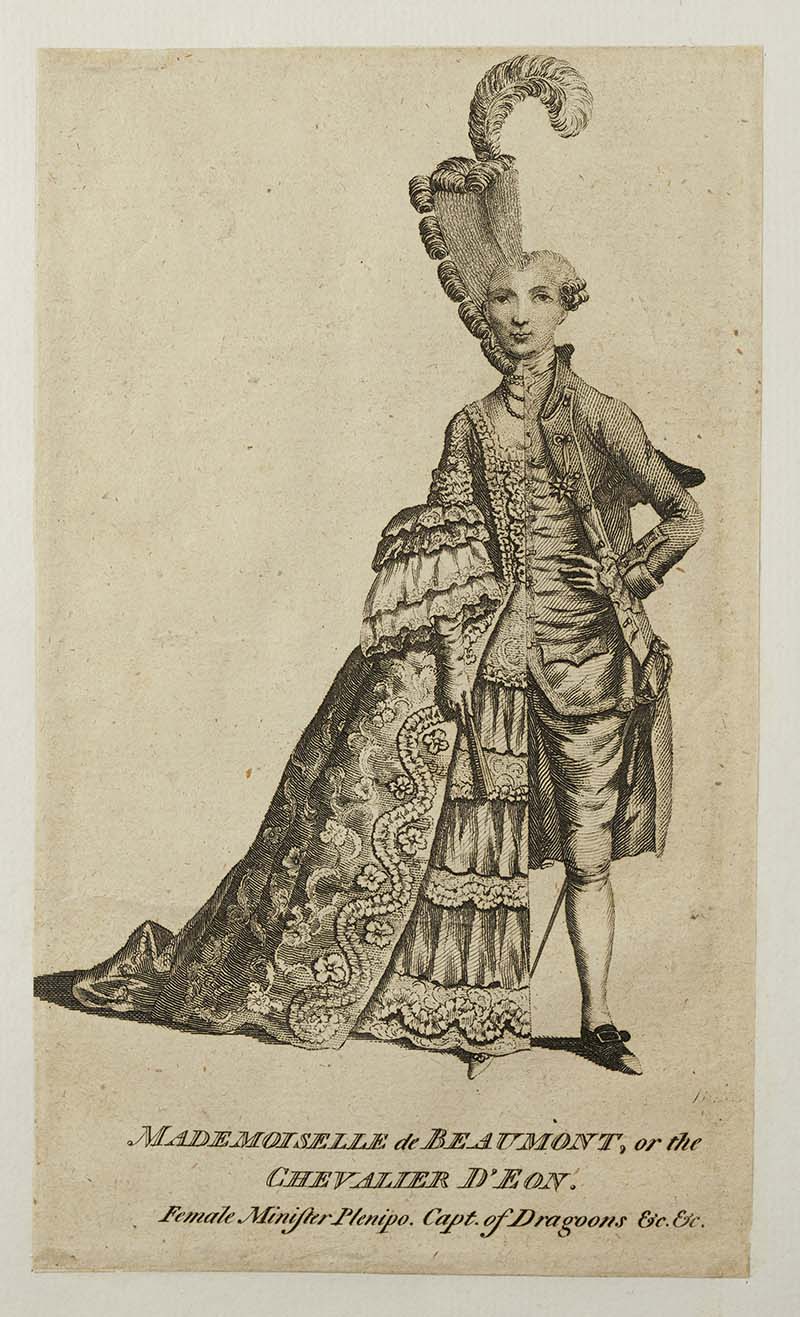
The two lives of the Chevalier D'Eon: "Mademoiselle de Beaumont, or the Chevalier D'Eon. Female Minister Plenipo. Capt. of Dragoons etc etc"
The two lives of the Chevalier D'Eon: "Mademoiselle de Beaumont, or the Chevalier D'Eon. Female Minister Plenipo. Capt. of Dragoons etc etc"
Essential item 2: something to read
A slightly larger, but still portable, item is a beautiful Jacobean travelling library. It is one of only four known examples in the world.
It was probably commissioned in 1617 by the London lawyer William Hakewill as a New Year’s gift for a friend. In 1617 Hakewill was made Solicitor General to King James I’s consort, Queen Anne.
The case of the library is made of wood but looks like a large leather-bound book when it is shut. When it is opened it reveals three shelves and 43 beautiful miniature books on theology, philosophy, history and poetry. Each book has an angel tooled in gold on the spine and on the front another angel bearing a scroll reading GLORIA DEO (Glory to God).
It is a firm favourite with visitors to the Treasures of the Brotherton Gallery, and has been nicknamed the “Jacobean Kindle”.
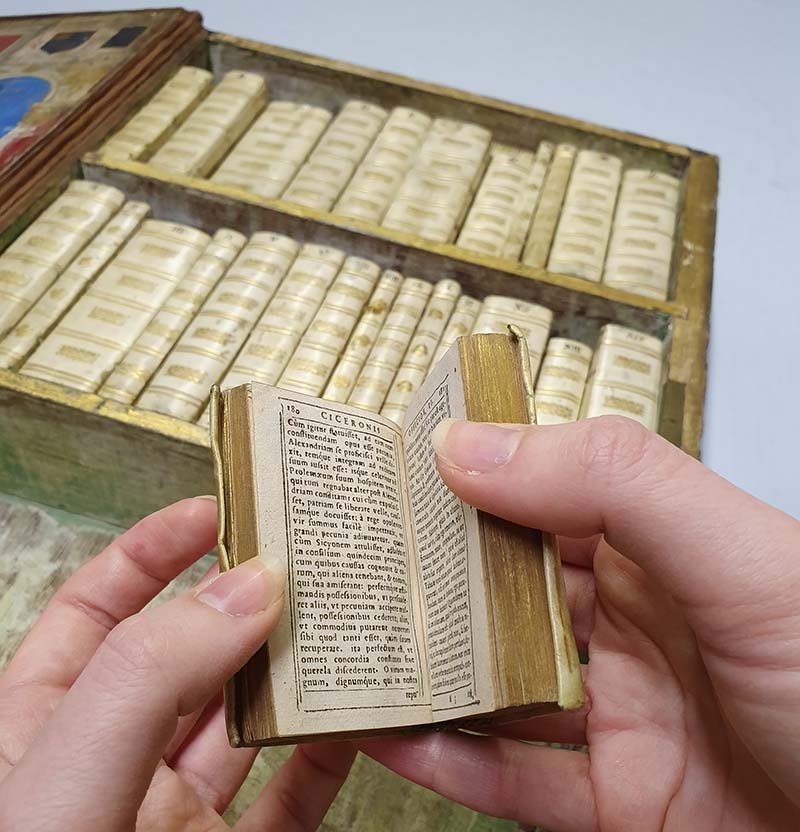
One of the books in the set contained within the travelling library.
One of the books in the set contained within the travelling library.
Essential item 3: learning the language
Dorothy Una Ratcliffe’s love of literature was a key influence and starting point for the Brotherton Collection, but she was also a poet and writer herself. She travelled extensively and wrote books and articles on her expeditions, but her poetry was often connected to the the Yorkshire Dales, which she loved.
Dorothy often wrote poetry in the Wensleydale dialect and established a friendship with the Dales artist Fred Lawson, based in Castle Bolton. Lawson’s paintings and woodcuts of the Dales often included scenes from Gypsy and Traveller life, and Dorothy chose him to illustrate many of her poetry books.
One beautiful item in the collection is a unique copy of Dorothy’s poetry book “Dale Courtin’”, which Lawson hand-wrote and illustrated for her as a gift.
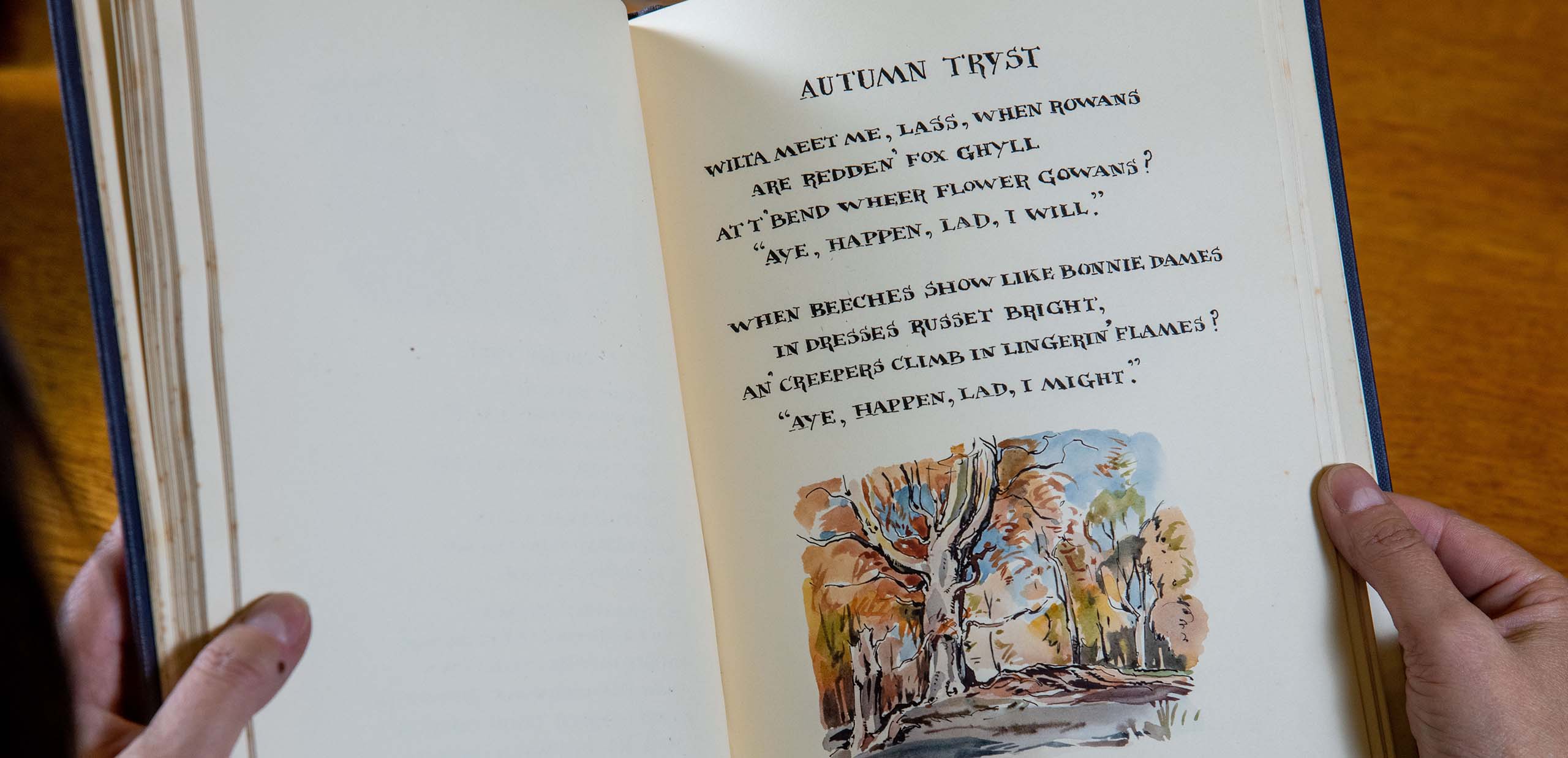
The unique copy of "Dale Courtin'" that Fred Lawson created for Dorothy Una Ratcliffe.
The unique copy of "Dale Courtin'" that Fred Lawson created for Dorothy Una Ratcliffe.
Gypsy, Traveller and Roma Collections
Dorothy was very interested in Gypsy, Traveller and Roma life and gathered a significant collection of manuscripts, books, photographs and art-works, which she gifted to the Brotherton Collection in 1950. These formed the foundation of the Gypsy, Traveller and Roma Collections now held by the Library, which have been awarded Designated Status by Arts Council England for their significance.
One of the oldest items collected by Dorothy is “Die Rotwelsch Grammatic”. It is a 1520 book about Rotwelsch, a language used by itinerant craftsmen from the Middle Ages onwards. The language is based on German but includes a large proportion of words from Yiddish, Judaeo-Latin and Romany languages.
The Brotherton copy of this book is the only copy still in existence, and it reflects Dorothy’s love of language and interest in dialect.
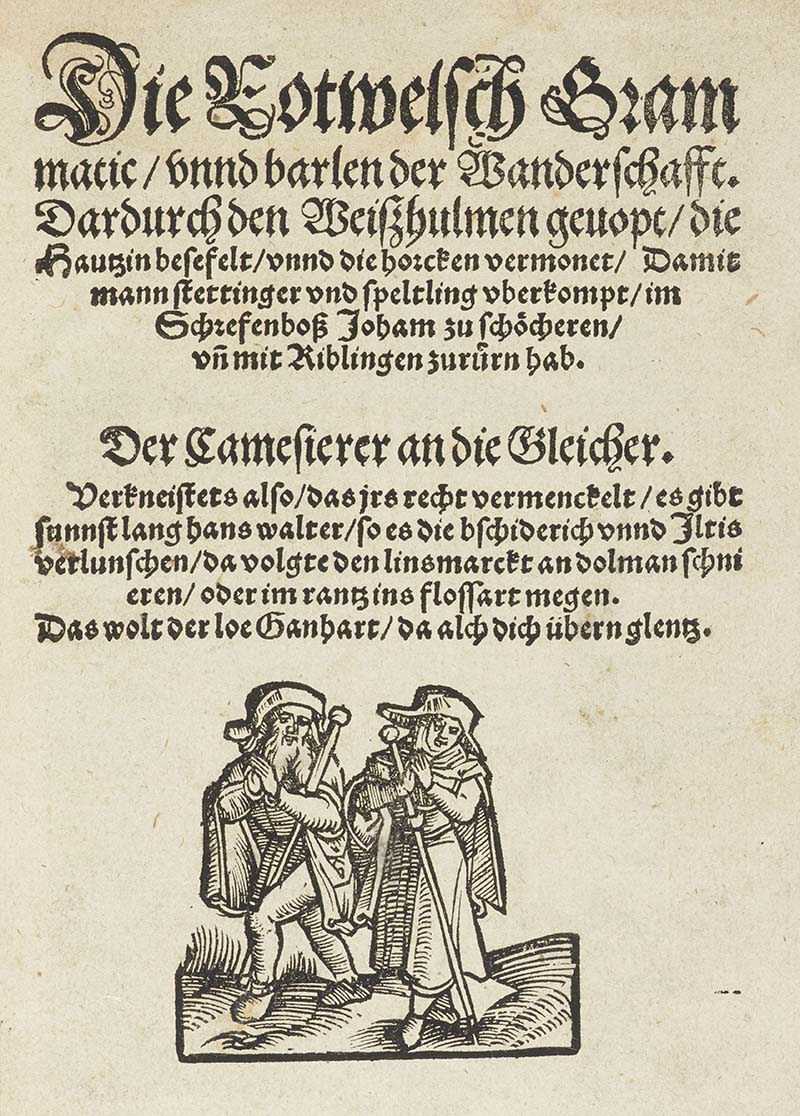
The title page of the “Die Rotwelsch Grammatic”, published in 1520.
The title page of the “Die Rotwelsch Grammatic”, published in 1520.
Words and music
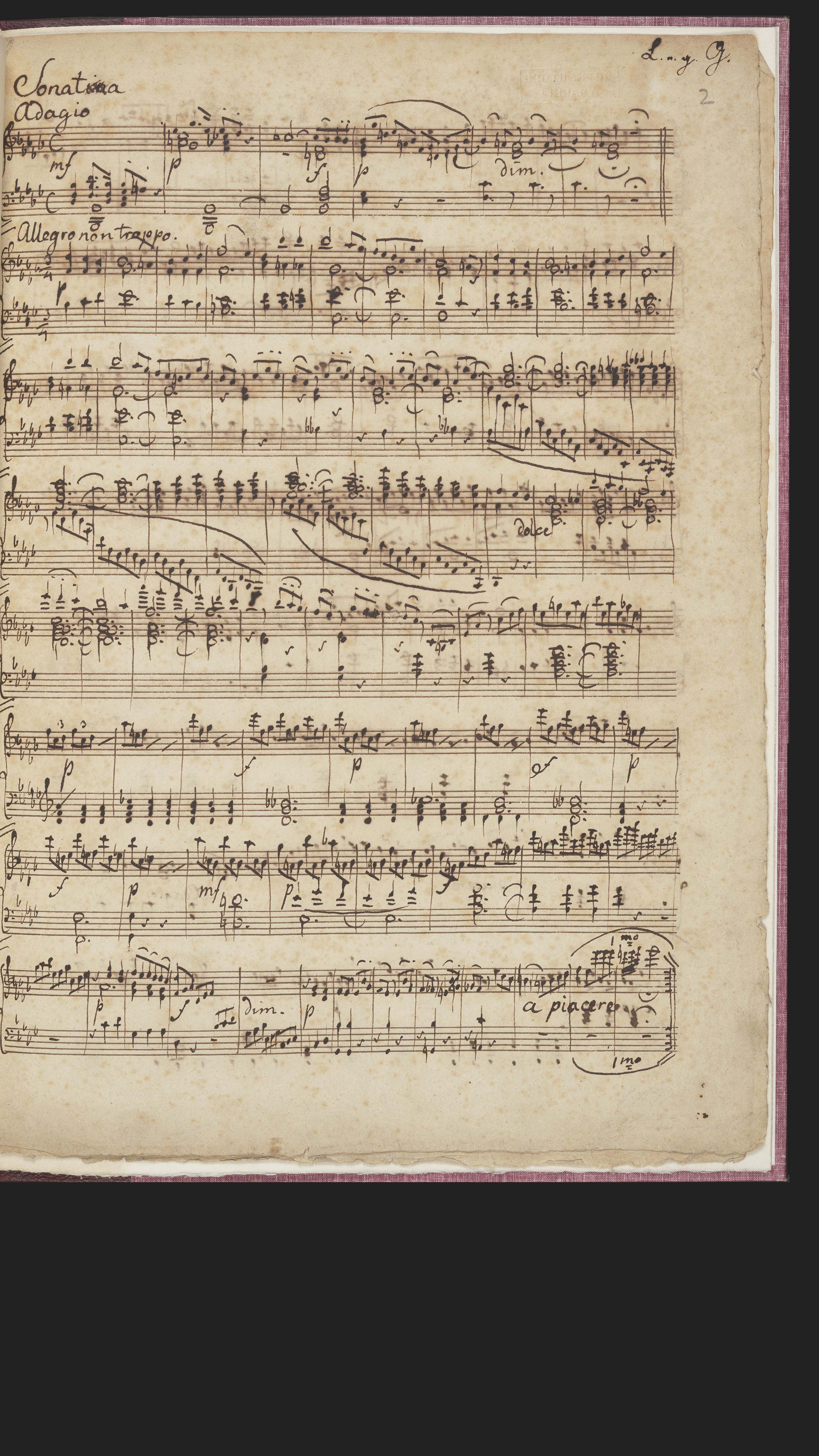
The Brotherton Collection contains some very special items from the 19th century, including music and literature from two precocious teenagers and a beautiful tribute to the poet Keats.
Mendelssohn’s ambitious sonata
Among the 11 manuscript scores by the romantic composer Mendelssohn is the sole surviving manuscript of his Sonata for piano in B flat minor. Mendelssohn composed this when he was just 14 years old. Mendelssohn was a talented water-colourist and poet as well as an imaginative composer.
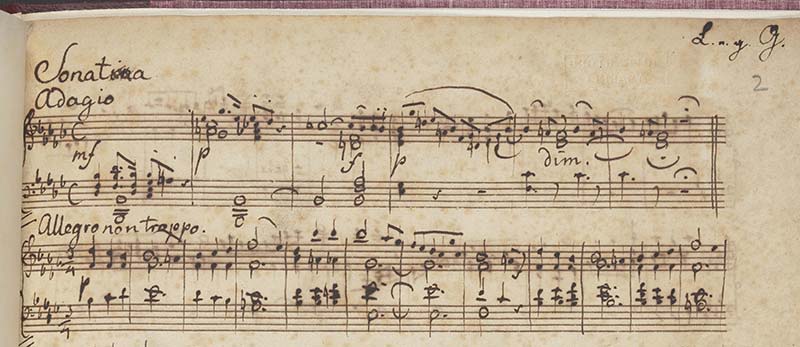
The heading of the score was originally “Sonatina”, which usually means a work that is lighter in character or technically easier than a typical sonata. However, the young Mendelssohn decided to stake a claim for the importance of his score. He scrubbed out the letters ‘i’ and ‘n’, to retitle it as a more serious work.
Branwell Brontë’s little books
Branwell Brontë was another teenager with artistic aspirations. From a young age, Branwell and his sisters Charlotte, Emily and Anne created sagas, which they wrote down in little books. These were made from scraps of paper, sometimes bound in material from sugar bags or pieces of wallpaper. They featured contemporary political figures, including the Duke of Wellington and Napoleon.
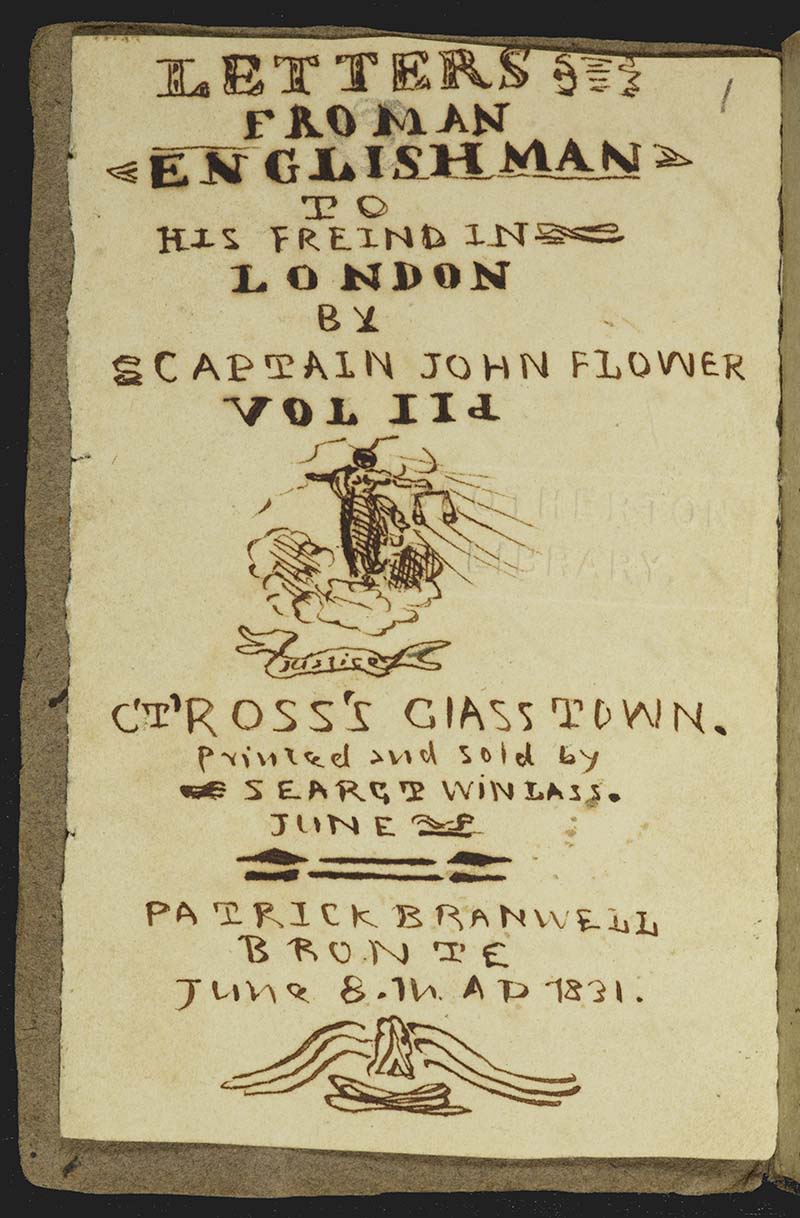
The only little books by the Brontës known to still exist were written by Charlotte and Branwell. The Brotherton Collection includes six of Branwell’s little books, written in a tiny script and titled “Letters from an Englishman”. One of these includes a pointed note that has been attributed to Emily. It is written in French and ends: “My faith [is] that you are a bad boy and you will be a shocking man.”
Branwell died in September 1848 after a period of alcoholism and addiction to opium and laudanum. Emily died less than three months later.
The jewels and the leaf in Keats
Another 19th century item in the collection is a beautiful edition of “The Poetical works of John Keats” (1851).
The book was bound in London for the bookseller Charles J. Sawyer, from whom Lord Brotherton also purchased many of his medieval manuscripts. When the book is opened it reveals an extraordinary jewelled lining and a delicate watercolour portrait of Keats.
Also preserved inside the book is a single pressed leaf and a note to explain its origin. The leaf is from the Mulberry Tree at Keats’ House, Lawn Bank, under which he is said to have written “Ode to a Nightingale”. The leaf was picked by Robert Underwood Johnson, an American writer, conservationist, diplomat and co-founder of the Keats-Shelley House in Rome.
Contemporary poets
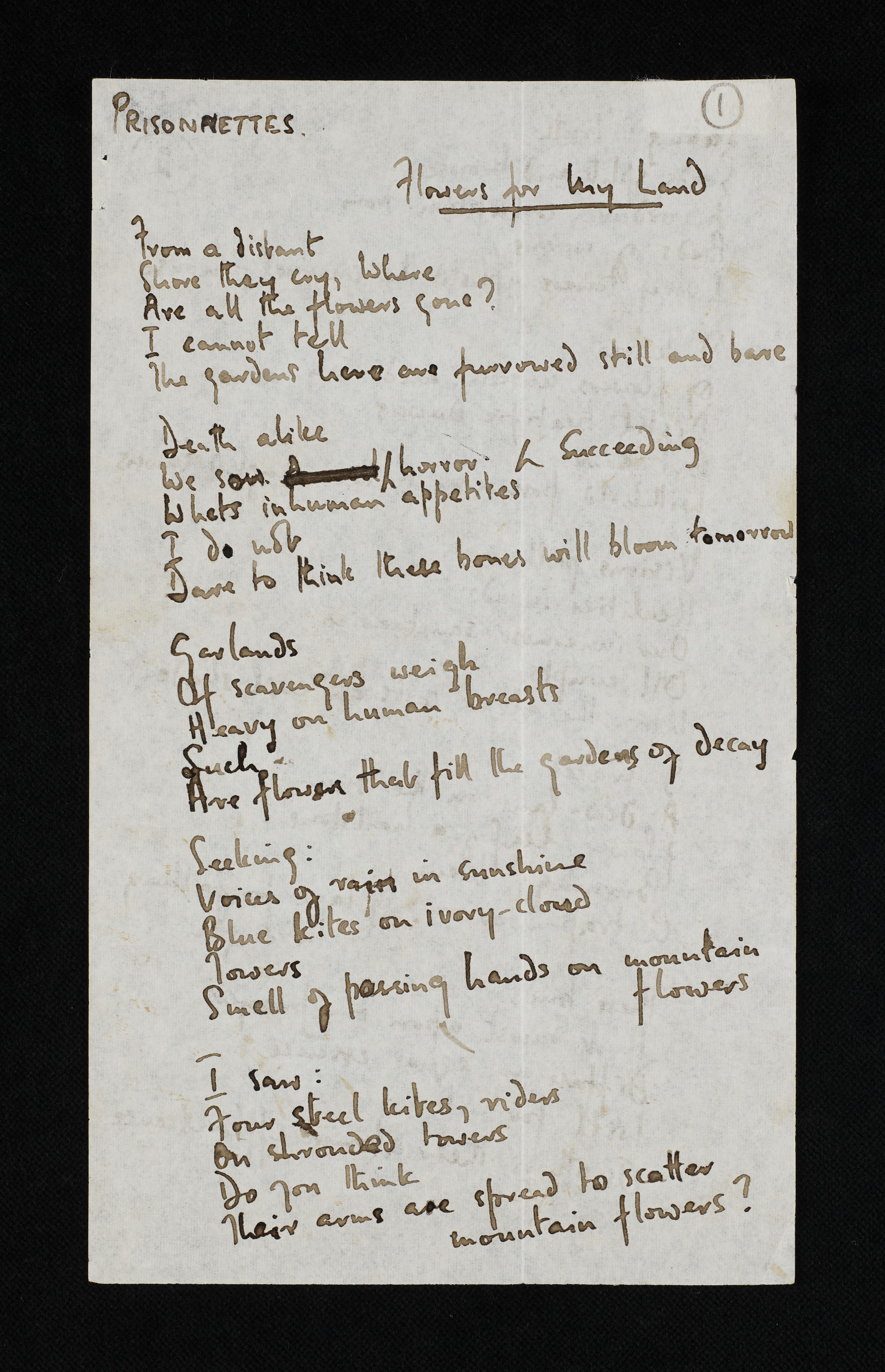
English literature has been a strength of the Brotherton Collection from Lord Brotherton’s purchase of its very first book, Andrew Marvell’s “Miscellaneous Poems”.
The Brotherton Library at the University of Leeds is proud to build on this tradition by conserving the archives of leading contemporary writers and poets. These archives include research notes, drafts and correspondence, and are unique resources for students, researchers, creative writers and artists.
Many of these poets have connections to the University of Leeds, including Tony Harrison, the Nobel Laureate Wole Soyinka, and Simon Armitage, Poet Laureate and Professor of Poetry at Leeds.
Wole Soyinka’s smuggled manuscripts
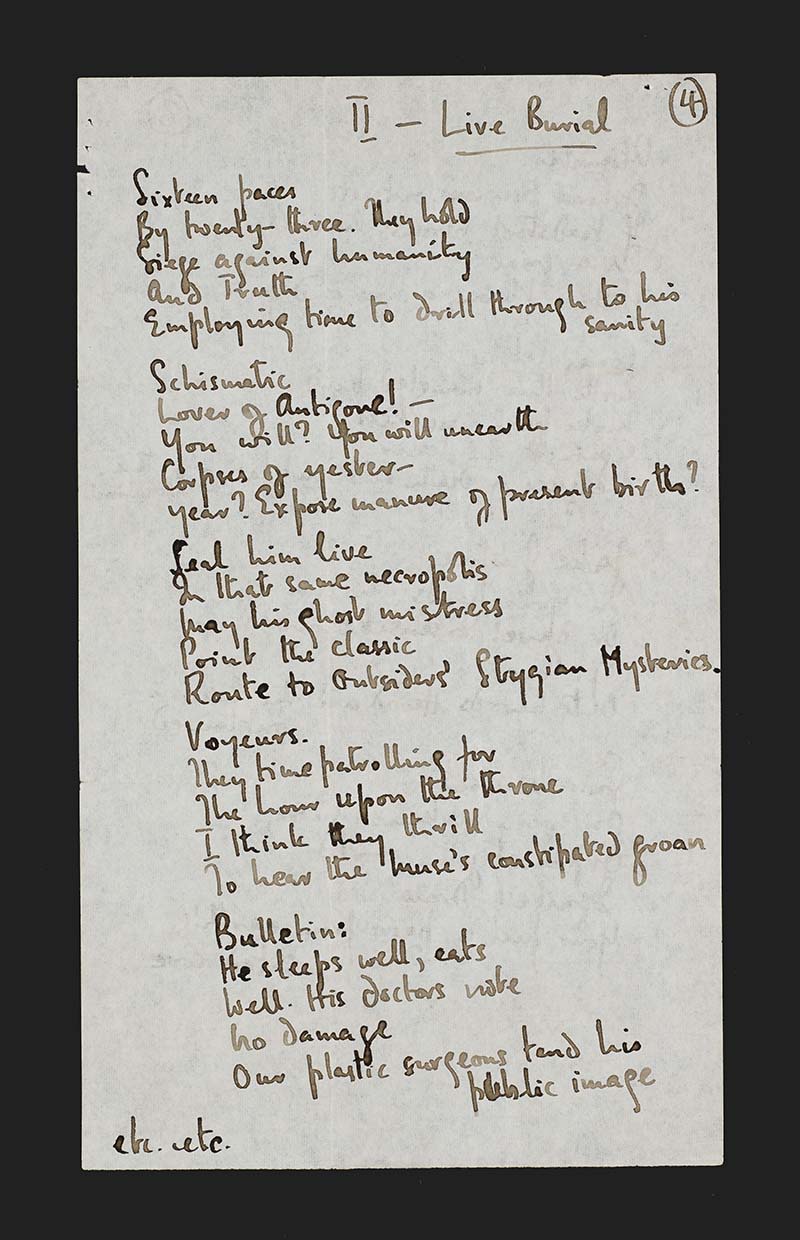
Copyright Wole Soyinka. Image used with permission of the author.
Copyright Wole Soyinka. Image used with permission of the author.
Tony Harrison and Wole Soyinka both studied at the University of Leeds in the late 1950s. Tony Harrison studied Classics and Wole Soyinka studied English Literature, and they became friends after meeting on the Leeds Rag Revue. When Tony Harrison produced his first play, “Aikin Mata”, in 1965 it was dedicated to Soyinka.
Two years later Soyinka was arrested in Nigeria for opposition to the Federal Military Government. He was imprisoned for almost two years and held in solitary confinement and denied materials to read and write for most of this time.
While in prison, Soyinka managed to smuggle out manuscript drafts of his “Prisonette” poems, “Flowers for my land” and “Live burial”. The poems were sent to the publisher Rex Collings who published them as “Poems from Prison” (1969). The risk to the safety of Soyinka and others was such that Soyinka asked Collings in an accompanying letter not to reveal when the manuscripts had been received.
Wole Soyinka was awarded the Nobel Prize for Literature in 1986.
Tony Harrison’s layered notebooks
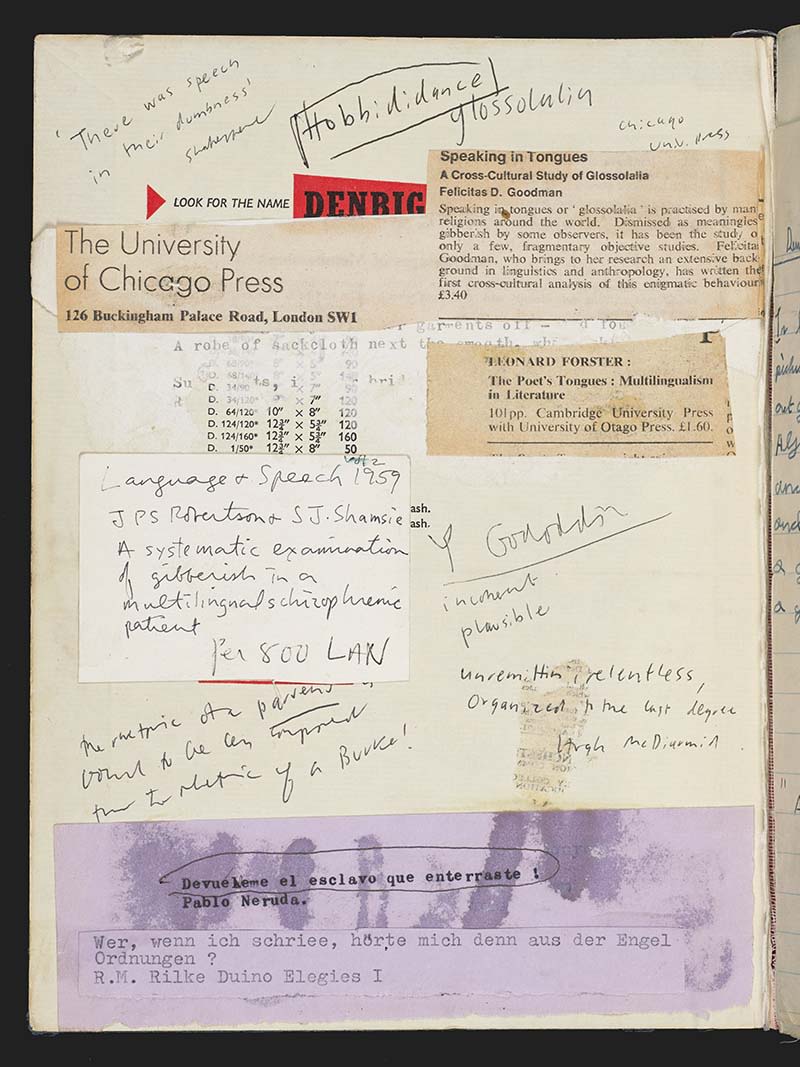
Copyright Tony Harrison. Image used with permission of the author.
Copyright Tony Harrison. Image used with permission of the author.
Many drafts of Tony Harrison’s poems and plays are found in his detailed notebooks, over 200 of which are preserved in the Brotherton Collection. These notebooks offer an insight into Harrison’s working process and the meticulous research behind his accessible writing style.
Harrison was born into a working-class family in Beeston, Leeds and said in an interview for the Guardian that he “wanted to write poetry that people like my parents might respond to”.
The notebooks are full of clippings from newspapers and quotations that have been typed and pasted onto the pages. Drafts of Harrison’s works are often pasted on top of each other and reveal the evolution of his poems and plays. Wine bottle labels, photographs and train tickets are also included and give a vivid impression of time spent on location.
Simon Armitage’s archive
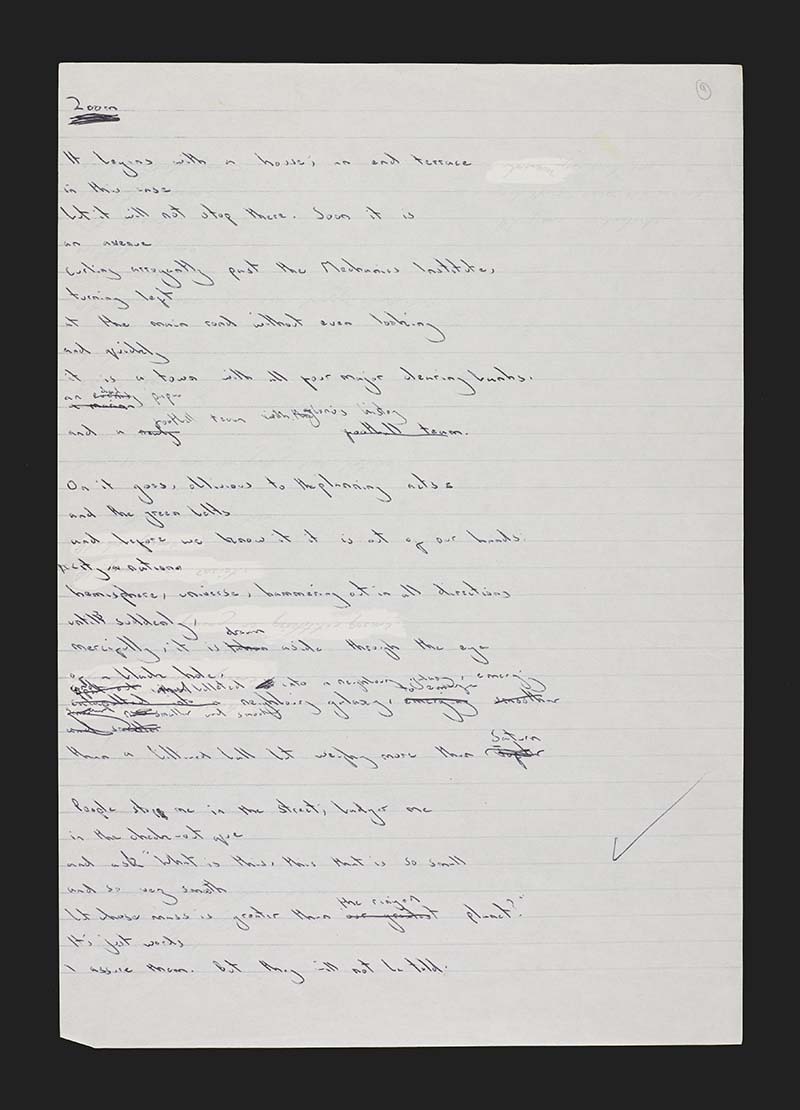
Copyright Simon Armitage. Image used with permission of the author.
Copyright Simon Armitage. Image used with permission of the author.
The manuscript of Simon Armitage’s first full-length collection, “Zoom!” was written while he was a probation officer in Manchester, and drafts of poems written on Greater Manchester Probation Office stationery are included in his archive.
Armitage’s experiences of prisons and housing-estates influenced these poems, which he described later as written in a “state of literary innocence.” Like Harrison, Armitage was keen to use the language and dialect of his upbringing in semi-rural West Yorkshire to challenge conventional poetry and the wider establishment.
Special Collections began acquiring Simon Armitage’s archive in the early 1990s, when Chris Sheppard, the then Head of Special Collections recognised Armitage’s talent at an early stage in his career. Simon Armitage became Leeds' first Professor of Poetry in 2017 and was appointed Poet Laureate in 2019.
Join the Brotherton 100 celebrations
Throughout 2022 there will be a series of online and in-person events celebrating Lord Brotherton and the start of his incredible collection.
Visit the Leeds University Libraries Galleries website for details of upcoming events, or follow us with #Brotherton100 on Twitter, Instagram, Facebook or TikTok.
Join our mailing list to be the first to hear about new collections, events and activities.
Image descriptions
The full text descriptions of the images of the objects in this exhibition are below.
Brotherton Collection
Andrew Marvell
Two yellowing pages at the start of the book show a black-and-white portrait of Andrew Marvell and opposite, a dedication from his wife. The portrait shows the head and shoulders of a man with shoulder-length dark curly hair and a short beard around the mouth. He wears a large white collar seen beneath a cloak with a fur trim. The picture frame is hexagonal and rests on a plinth onto which his name is scripted: “Andr. Marvell Esq”.
The facing page has the text: “To the reader. These are to Certifie every Ingenious Reader, that all these Poems, as also the other things in this Book contained, are Printed according to the exact Copies of my dear late Husband, under his own Hand-Writing, being found since his Death among his other Papers, Witness my Hand this 15th day of October, 1680. Mary Marvell”.
Mayor of Wakefield
A black and white photograph mounted on the thick pink paper of a photograph album. Thin strips of paper over each of the corners keep the photograph in its place. The photograph shows a man with grey hair and a thick moustache who is facing the camera. He is seated and wears the fur-trimmed cloak and the chain of a mayor.
Stourton works
A black and white photograph mounted on a photograph album page of thick cream paper. The photograph shows a boy and two men in the works yard of a chemical manufacturing plant. The boy has fair short hair and is wearing a white shirt, and dark tie, waistcoat, trousers and overcoat. He is as tall as the shoulders of the gentleman standing next to him, who he is looking towards. Lord Brotherton stands in the middle of the group, wearing a dark suit with waistcoat and tie, and a lighter hat with dark hat band. He is shaking the hand of the second man in the picture who wears a dark waistcoat, trousers and neckerchief. The sleeves of his white shirt are rolled up.
The men stand in front of tanks to transport chemicals by train. A description of the photograph is handwritten on the album paper beneath the photograph. It reads: Stourton works: 12th Sept 1928. The Chairman with A. Clarke and F. Dixon.
Brotherton Library
Students sit at long brown tables arranged symmetrically around a large circular wooden desk in the Brotherton Library round reading room. There are computer screens on the circular desk and stools below it. Directly above the desk is the dome of the reading room, with a large art deco chandelier hanging down from the apex of the dome. A set of rectangular windows circle the base of the dome. At the back of the photograph 13 marble pillars in 2 rows support the ceiling and dome of the reading room. The reading room lights are situated between the two rows of pillars. Behind these lights is the second floor of the reading room, a gallery space with a direct view onto the floor below.
Medieval manuscripts
Illuminated roll
Two off-white rectangular strips of parchment (sheepskin), longer than they are wide. The parchment shown in the first image is divided into two columns of handwriting in black ink. This text is divided into short sections which are often separated by illustrations made in small circles (roundels). The first letter of each small section is illuminated in gold, with a coloured square surround. The first half of this piece of parchment is surrounded by a decorative border which includes patterns, plants and flowers in red, blue and gold. Before the text begins there are six roundels which stretch across the head of the parchment and depict the six days of creation as told in the Bible.
The parchment shown in the second image is divided into four columns, with sections again divided by illustrated roundels, and the first letter of each section illuminated.
Book of hours
A full page illustration on the right hand page of a book with a small cream margin along the top, bottom, and right hand side of the page. The largest image on the page is an arched miniature of King David, which is centred on the page and runs from the top to the middle. It shows David in blue, kneeling underneath a flying figure in red, who represents God. There is a rocky landscape behind David, and a watermill on the opposite bank. A town can be seen in the distance.
Surrounding the arched image are eight brightly coloured smaller illustrations of the life of David, in circles (roundels). These include David and Goliath and Bathsheba in her bath. The main colours are gold, red, blue and green. Behind the decorated roundels there is a brightly coloured decorative pattern made up of plants, leaves, flowers and birds.
Beautiful books
Ovid
A right hand side page of a book. The page contains a single column of printed text in Latin in black, and has two hand-drawn illustrations and notes made in ink in the wide right hand margin. One illustration is of a bull (Taurus) and the other is of a figure being attacked by a lioness.
Schatzbehalter
Black and white illustration of a room with tiles on the floor and five long windows. On the left of the picture is a door through which a crowd of people are entering. The first of these are a man and a woman who wear cloaks, the man has a halo. In the room a boy holds a beaker and is taking a jug out of a shallow cask on the floor, which holds another jug. On the right of the picture, a table is set for a meal, with cutlery and dishes. Six people sit at the table. One of the men has long hair, a beard and a halo.
Kelmscott Chaucer
Two pages of the Kelmscott Chaucer, both highly decorated with black and white illustrations and patterns. The first page has an intricate decorative border of leaves and vines. The border surrounds a square with white edging which contains a different and smaller pattern of leaves and stems. The words “the works of Geoffrey Chaucer now newly imprinted” are written in white on the pattern.
The facing page has the same decorative border. A square is set in the border, with a heading of black ink on a white background, that reads: “Here beginneth the tales of Canterbury and the first the prologue thereof”. Beneath the heading is a picture of a figure reading a book, next to a well and a tree, with mountains in the background and a fence in the foreground. The prologue begins below, with a decorated square and large capital ‘W’, for the first word which is “Whan”. A large decorated capital ‘B’ features lower down in the text.
Shakespeare
Third folio
Three pages from the Third folio.
The first page is the left-hand page of a book with off-white paper, with a black and white portrait of Shakespeare and black text. Shakespeare’s gaze is directed at the reader. He is partially bald with hair that reaches midway down either side of his face. He has a small moustache and wears a square shaped ruff around his neck, and a doublet, or jacket.
Beneath the portrait is a verse titled ‘to the reader’ and signed by B.J. It reads:
This figure, that thou here seest put,
It was for gentle Shakespeare cut;
Wherein the Graver had a strife,
With Nature, to out-doe the Life:
O, could he have but drawn his Wit
As well in Braße, as he has hit
His Face; the print would then surpass
All, that was ever writ in Braße.
But since he cannot, Reader, look
Not on his Picture, but his Book.
The second image is the title page. It reads:
Mr William Shakespear’s
Comedies, Histories and Tragedies.
Published according to the true Original Copies.
The Third Impression.
And unto this Impression is added seven Playes, never
Before Printed in Folio.
Viz
Pericles Prince of Tyre.
The London Prodigall.
The History of Thomas Ld Cromwell.
Sir John Oldcastle Lord Cobham.
The Puritan Widow.
A York-shire Tragedy.
The Tragedy of Locrine.
Beneath this list of plays there is a circular symbol surrounded by two snakes, with a bird in the centre. At the bottom of the page text reads: London: Printed for P.C. 1664
The third image shows the first page of Shakespeare’s play The Tempest. Above the title of the play is a partial decorative border, with a rose on the left side and a thistle on the right. Tiny handwriting can be seen but not read, filling the right hand border of the page, and occasionally within the text.
Jonson folio
A black and white illustration of a monument with pillars and decorative carving. In the centre of the monument is a white square with text in black that reads: The workes of Beniamin Jonson. Two figures stand, one on either side of the square. Beneath the square is a white oval with black text that reads: Imprinted at London by Will Stamby.
Beaumont and Fletcher
Two pages printed in black ink on off-white paper. The first is a portrait of John Fletcher, as a roman-style bust with a laurel wreath around his head. Fletcher has short curly hair, a moustache and short pointed beard. The portrait is surrounded by scroll work and topped by a crest. Above the crest, a paragraph in Latin is held by two figures on a banner, and another section in Latin is under the portrait at the bottom of the page.
The second page is the title page of the book, with the following words set at different sizes: Comedies and tragedies written by Francis Beaumont and John Fletcher, Gentlemen. Never printed before, And now published by the Authours Originall Copies. Si quid babent veri Vatum praesagia, vivam. London, Printed for Humphrey Robinson, at the three Pidgeons, and for Humphrey Moseley at the Princes Armes in St Pauls Church-yard. 1647.
Travelling
Chevalier D'Eon
A line drawing of a figure split down the middle vertically. On the left side the figure wears 18th century women’s dress with a high wig. On the right side the figure wears the clothes usually worn by 18th century gentleman: a wig, long coat, knee length breeches and stockings.
Dale Courtin'
Handwritten poem titled Autumn Tryst written in black ink on cream paper.
The poem reads:
Wilta meet me, lass, when rowans
Are redden’ Fox Ghyll
At t’bend wheer flower gowans?
“Aye, happen, lad, I will.”
When beeches show like bonnie dames
In dresses russet bright,
An’ creepers climb in lingerin’ flames?
“Aye, happen, lad, I might.”
Beneath the poem is an illustration of a glade of trees made in pen and watercolour.
Rotwelsch Grammatic
Title page written in black ink on an off-white background. The language is Middle German and is printed in a distinctive medieval German typeface. Text covers two thirds of the page. At the bottom of the page is a woodcut of a man and a woman in travelling costume, including cloaks and hats, and carrying staves (long sticks).
Words and Music
Branwell Brontë
The first page of Branwell Brontë’s little book, handwritten text says: “Letters from an Englishman to his freind [sic] in London by Captain John Flower Vol IId. C’T’Ross’s glasstown. Presented and sold by Seargt Winlass. Patrick Branwell Brontë June 8th AD 1831”. In the middle of the page is a small illustration of the figure of justice holding scales in her hands. The word “justice” is written below the illustration.
Keats
Three images, the first image shows the deep blue cover of the book “The Poetical works of John Keats”, with a gold embossed border and a monogram of the letters ‘J’ and ‘K’ in the centre.
The second is the reverse of the cover of the book. A watercolour miniature of Keats shows the poet with his chin resting on one hand against a blue-grey background. Keats is dressed in a grey coat and waistcoat and wears a white shirt. The miniature is oval in shape and set in a jewelled binding. Six small blue stones surround the portrait in a gilt oval. The background to the oval is a pattern of flowers and leaves in red, blue and gold.
The last image shows the miniature next to the facing page of the book, which is covered in a silky material. A handwritten small note and dried mulberry leaf rest on this page. The note says: This leaf was taken by me from the Mulberry tree at Lawn Bank under which Keats sat while he wrote the “Ode to a Nightingale”. Robert Underwood Johnson, July, 1526.
Contemporary poets
Wole Soyinka
Handwritten poem written in black ink on off-white paper. The poem is titled “2 - Live Burial’ followed by a circled page number 4. The text reads:
Sixteen paces
By twenty-three. They hold
Siege against humanity
And Truth
Employing time to drill through to his sanity
Schismatic
Lover of Antigone! -
You will? You will unearth
Corpses of yester-
year? Explore manure of present births?
Seal him live
In that same necropolis
May his ghost mistress
Point the classic
Route to outsiders’ Stygian Mysteries.
Voyeurs.
They time patrolling for
The hour upon the throne
I think they thrill
To hear the muse’s constipated groan
Bulletin:
He sleeps well, eats
Well. His doctors note
No damage
Our plastic surgeons tend his
public image
Tony Harrison
Paste-down of Tony Harrison’s notebook titled School of Eloquence 1. The make of the notebook Denbigh has been partially obscured by book reviews on books relating to poetry and speaking in tongues, which have been pasted onto the page as well as the address of the University of Chicago Press. Other notes have been jotted around the pasted in clippings, some of which are illegible. One reads “‘there was speech in their dumbness’ Shakespeare.” At the bottom of the page a typed quotation from Pablo Neruda in Spanish, and a quotation from Rilke in German have been pasted.
Simon Armitage
Handwritten draft of Simon Armitage’s poem “Zoom!” in black ink on white lined paper. In some places words have been crossed out and substitute words added. At the side of the poem is a large tick. The text reads:
Zoom
It begins with a house, an end terrace
In this case
but it will not stop there. Soon it is
an avenue
Curling arrogantly past the Mechanics Institute,
turning left
at the main road without even looking
and quickly
it is a town with all four major clearing banks,a an evening dud paper
and a newly football team with glorious historyfootball team
On it goes, oblivious to the planning acts
and the green belts
and before we know it it is out of our hands:
a city, or nation,
hemisphere, universe, hammering out in all directions
untill suddenly,
mercifully, it is taken drawn aside through the eye
of a black hole,and spat out bulleted into a neighbouring galaxy , emergingcatapulted into a neighbouring galaxy, emerging smoother to emerge smaller and smoother
and smaller
like a billiard ball but weighing more than Jupiter Saturn
People stopp me in the street; badger me
in the check-out que
and ask “What is this, this that is so small
and so very smooth
but whose mass is greater than our greatest the ringed planet?”
It’s just words
I assure them. But they will not be told.